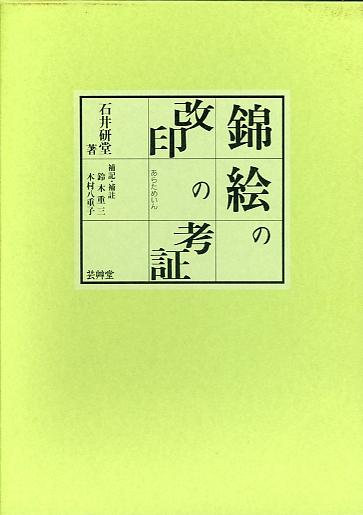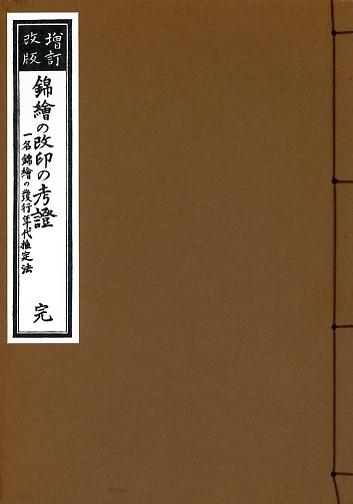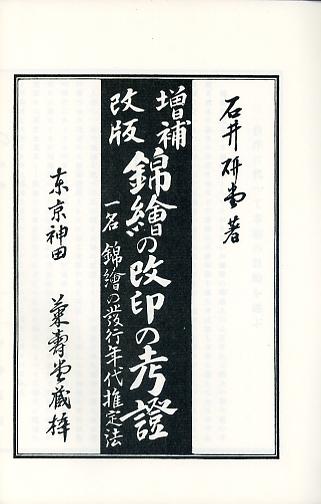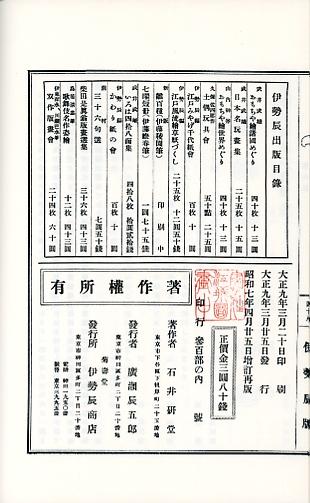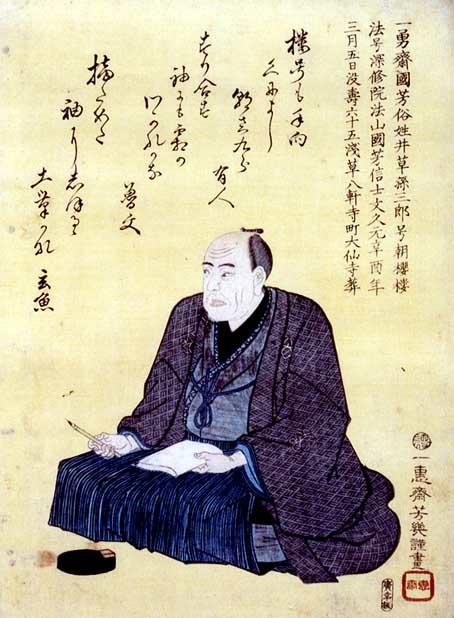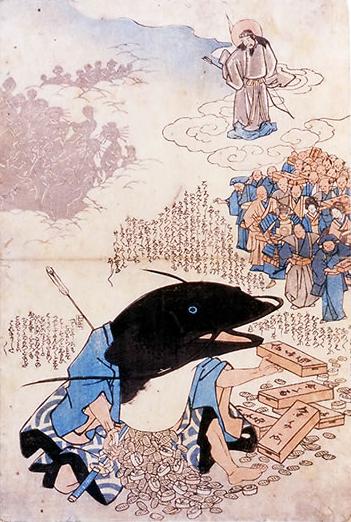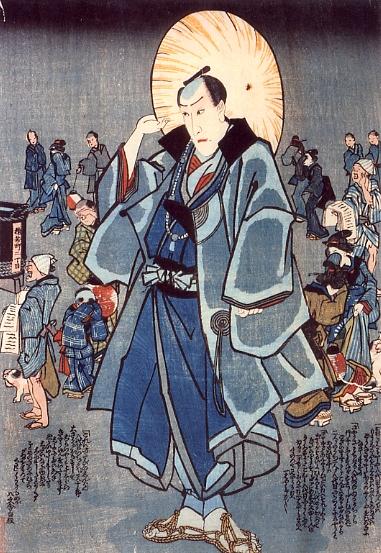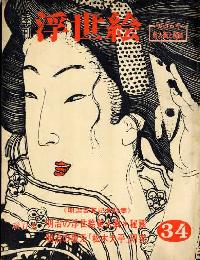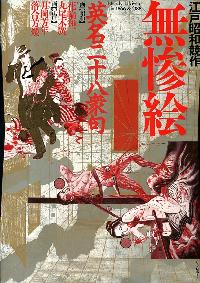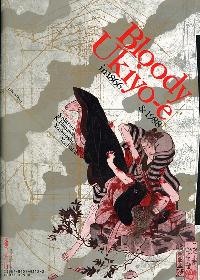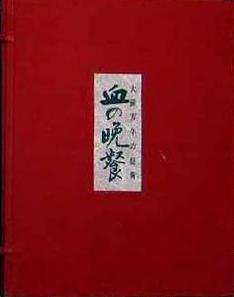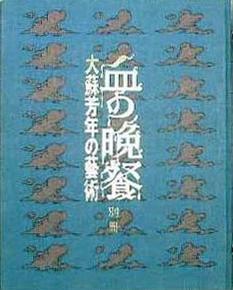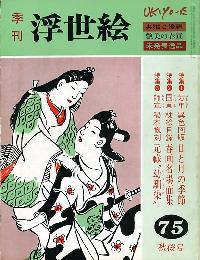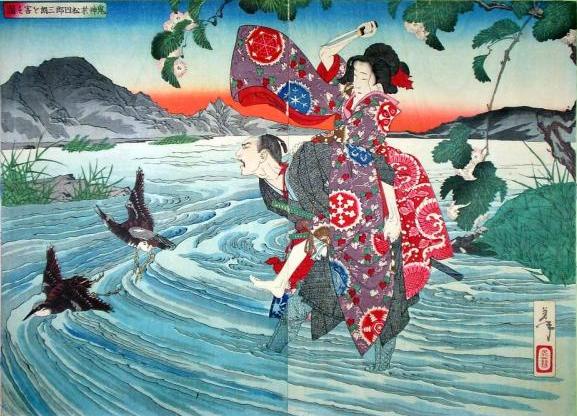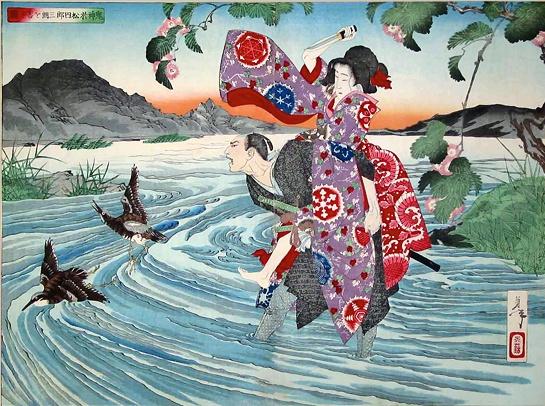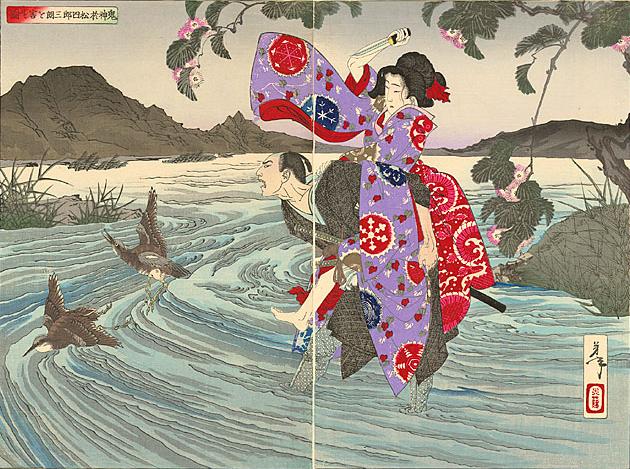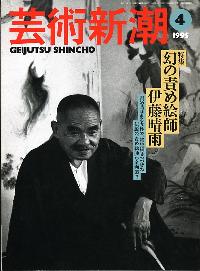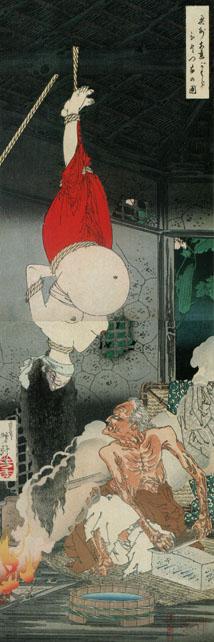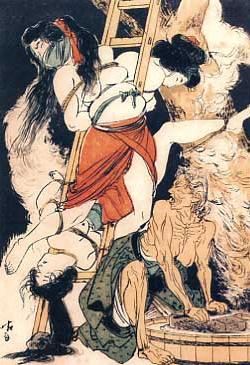| Bibliography of news nishikie related publications | ||||
| Introduction | General | Stories | Drawings | Topics |
History
•
Bowles and Carver 1970
•
Chibbett 1977
•
Formanek and Linhart 2005
•
Furusho 1998
•
Henderson 1983
•
Higuchi 1962
•
Hillier 1987
•
Illing 1980
•
Ishii 1920
•
Ishii 1929
•
Itabashi 2004
•
Kobbe 1913
•
Koshi 1989
•
Merritt and Yamada 2000
•
Nagata 1992
•
Newland 2004
•
Ryoji 1976
•
Shepard 1962
•
Shepard 1973
•
Shimonaka 1979
•
Suzuki 1971
•
Takahashi 1991
•
Takahashi 1992b
•
Tanaka 1986
•
Till 1995
•
Tomizawa 2004
•
Tsuji 1999
•
Uchida 2007
•
Uemura and Takamizawa 1931
•
Unno 1995
•
Yamada 2005
Publishers
Matsuki Heikichi I-V (circa 1764 to 1923)
•
Ukiyoe 1968-34
Drawers
Kuniyoshi (1798-1861)
•
Geijutsu shincho 1992-05
Ekin (1812-1879)
•
Chikamori 1997
Kawanabe Kyosai (1831-1889)
•
Geijustu shincho 1998-06
Yoshiiku (1833-1904)
•
Higuchi 1926
•
Kinoshsita 1996
•
Okado 1995
Yoshitoshi (1839-1892)
•
Akita 1999
•
Bessatsu Rekishi dokuhon 1988-07
•
Bijutsu techo 1974-11
•
Geijutsu seikatsu 1976-05
•
Geijustsu shincho 1994-09
•
Hanawa and Maruo 1988
•
Keyes and Kuwayama 1980
•
Keyes 1982
•
Mizue 1973-11
•
Mizue 1977-08
•
Narasaki et al 1977
•
Segi 1978
•
Segi 1985
•
Soya et al 1971
•
Shimamura 1999
•
Ukiyoe 1978-75
•
van den Ing and Schaap 1992
•
Yashiro 1982
•
Yokoo 1989
•
Yoshida and Isao 1992
Kiyochika (1847-1915)
•
Gunma 1986
•
Smith 1988
•
Yamanashi 1997
Ito Seiu (1882-1961)
•
Geijustsushincho 1995-04
Kishida Ryusei (1891-1929)
•
Geijutsu shincho 2000-02
Publications about printed drawings and their producers, with a focus on news illustration in mid-19th-century Japan, are found here. General works about drawings and drawers, and about the publishing industry including drawing, carving, printing, and distribution, are grouped under History. Works about publishers, drawers, carvers, printers and others involved in the production of drawings are listed by year of founding or birth. Studies of drawings related to specific topics -- murder in art, suicide in art, Satsuma War through nishikie -- are in the "Topics" section.
| History of printed drawings and their producers |
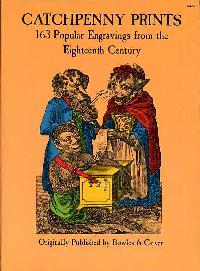
Bowles & Carver (original publisher) This book reproduces a collection of late 18th-century broadsides, all printed by the London firm of Bowles and Carver, reprinted for the first time in almost 200 years. The back cover blurb goes on to say:
Most of the prints are simple and didactic: "Swan" (below an image of a swan): "Julius Caesar" (below image of Caesar on horse). Some are elaborate engravings of scenes from everyday life: "The storming and taking of the Bastile by the Citizens of Paris, 14th July 1789"; "Horned Cattle drawing a Dung Cart". Others are comic-strip-like satirical stories: "Prince Squeak [a Rat] gives his orders with joy, All Enemy Cats [defending Cat's Castle] to destroy". A few are humorous on the darker side: "In the cold nipping Air, Mad Tom walks in despair" (Mad Tom walking in beggars clothes); "I stand up for my due, Says old Shylock the Jew" (Shylock with balance and knife). (WW) |
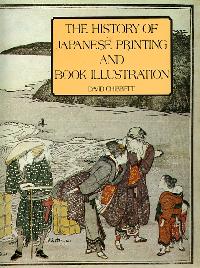
David Chibbett This book is a reasonable overview of the development of printing and book illustration, with lots of information about ukiyoe schools in the second half. It barely reaches the Bakumatsu period, however, and so sheds little light on the world of art and publishing from the middle of the 19th century. It does, however, have some interesting, if few, illustrations, both of printed text and graphic illustrations. Of interest here are two black-and-white illustrations. One shows "a papermaking shop selling fans, lanterns, and color prints (nishiki) [sic], from Dainihon bussan-zue (1877), illustrated by Hiroshige III" (p. 84, fig. 24). The other shows "Koshodo, the publishing house of Tsutaya Jusaburo, from the Ehon azuma asobi (1799), illustrated by Hokusai" (p. 86, fig. 25). (WW) |
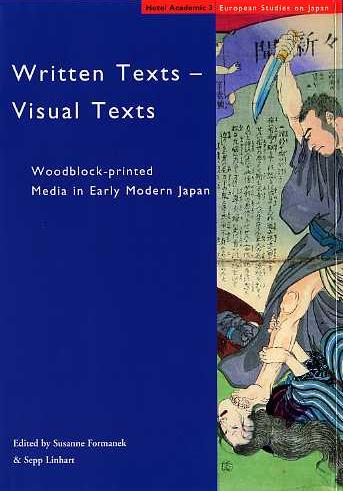
Susanne Formanek and Sepp Linhart (editors) This book features the following thirteen articles in three parts. Some of the articles are adaptations of articles that had been published in German in 1995. Others were written especially for this volume. See Written Texts - Visual Texts: A welcome book with a missing chapter on this website for my feature review of this book as published in the Number 80 (June 2006) issue of Andon. (WW) Contents
|
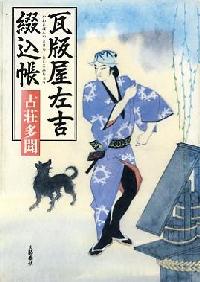
Furusho Tamon The band on the cover reads "Hitsu wa chikara yori tsuyoi!" [The brush is mighter than the sword!] -- the motto of both the progatonist of this novel and its creator. Sakichi writes stories that are published in kawaraban -- woodblock-printed broadside newssheets. Furusho used to be a newspaper reporter. "Furusho Tamon" is the penname of the non-fiction writer Uemae Jun'ichiro. Born in Gifu prefecture in 1934, Uemae graduated in Anglo-American Languages (Ei-Bei go ka) from Tokyo University of Foreign Languages before becoming a reporter for Asahi Shinbun. He turned free-lance in 1966 and also began writing historical mysteries, such this novel in his "Kawarabanya Series" about a kawaraban publisher in the late Edo period. In 1977, Uemae shared the 8th Oya Soichi Non-Fiction Prize for his first book, Taiheiyo no seikansha [Survivors of the Pacific], about Japanese prisoners of war who bore the stigma of being captured alive, some of whom cooperated in the production of leaflets urging Japanese to surrender. Uemae's by-line is perhaps best known to readers of the long-running "Yomu kusuri" [Reading medicine] column in the weekly Shukan bunshun -- a play on "nomu kurusi" [oral medicine]. The column ran in the magazine from 1983 to 2002, and was released in 37 volumes between 1984 and 2002. (WW) |
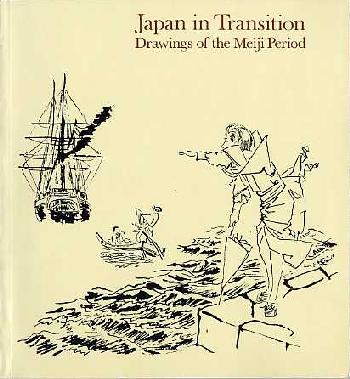
Milne Henderson This is an interesting effort to present a collection of preliminary drawings organized by apparent theme. Some captions, though, are flawed. The numbers in the Contents refer to plates, as there are no page numbers in the book. Drawings with Western Elements (1-32) Sumo Wresling and Kendo (22-40) Drawings of Geishas (41-86) Ronin and Samurai (87-105) Suicide (106-114) Aspects of Travelling (115-125) Drawings with Various Themes (126-144) Possibly drawn by ToshikataFrom the Introduction:
Jack Hillier and Roger Keyes were enlisted to attempt to trace the most likely artist. At the time of publication, both were in agreement that the drawings had possibly been done by Mizuno Toshikata (1866-1908), Yoshitoshi's best known student, though there was no certain proof of this. "Western" influenceThis book, like most others by self-conscious "Westerners", betrays a strong interest in "Western" influences on things "Japanese" during the Meiji period. From "The Impact of the West":
"Westernization" by "Westerners"Books like this are bound to be full of examples of how "Westerners" project their "Western understandings" on things "Japanese". Plate 114, which fills two facing pages (click on the image to enlarge), is accompanied by a caption that makes one wonder if perhaps people who believe that "Westerners" can't understand Japan might be right. |
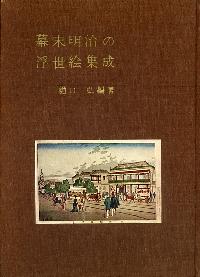
Higuchi Hiroshi (1905-1982) (ed) This compilation, of prints from museum and private collections, is one of the most important early postwar ukiyoe reference books covering specifically late Edo and Meiji prints. The prints span roughly half a century, from the period of reform that commenced with the arrival of Perry's ships in 1853, to the demise of ukiyoe around 1897 (Higuchi's dates). The 14 pages of front matter are guides to contents, organized by subject (e.g., Meiji restoration, steamships) or genre (e.g., nishikie shinbun, mitatee). Next come 136 unnumbered sheets of glossy stock printed on one side only. The first 2 sheets show color images of 4 prints, including Anji's print of Kyobashi Matsuda, which is also featured on the cover of this volume. The other 134 sheets feature black-and-white images of 430 prints. The 94 pages of back matter consist of commentary on the subjects and genres, a fairly detailed chronology (pp 77-84), and biographical briefs on numerous late-Edo and early Meiji drawers (pp 85-94). The book is supposed to have a slip case, though the copy obtained for this review did not have one. Two glossy sheets show 8 news nishikie, including (1) one Tokyo nichinichi shinbun print by Yoshiiku (TNS-736 Kishida Ginko == Taiwan Expedition), (2) two Yubin hochi shinbun prints by Yoshitoshi (YHS-661 Rashamen == foreigner's mistress; YHS-1127 Maebara Issei == Yamaguchi rebellion), (3) four Choya shinbun prints by Yoshitoshi's student Toshinobu II (1866-1903), and (4) one Jiji shinbun supplement by Chikanobu (1838-1912). Higuchi's commentary on "nishikie shinbun" [nishikie news] fills an entire page. It's most important contribution is a citation of a contemporary Choya shinbun article which remarks on the popularity of news nishikie (Higuchi 1962:61).
This last lines echo the phrasing in the first part of Fukuzawa Yukichi's Gakumon no susume [An encouragement (A promotion, The advancement) of learning], published in parts between 1872 and 1876. The first part came out in the second month of 1872, shortly before the above article, and near the end is the line "I would call this not knowing shame, I would call this not fearing laws" (恥を知らざるとや云はん、法を恐れずとや云はん) [Iwanami Shoten bunko edition, 86th printing, 2006, page 16; translation mine]. Higuchi is probably quoting the citation of Choya shinbun from a 1925-1926 work by Miyatake Gaikotsu, who says the article appeared in the 31 March 1875 issue of the paper -- shortly before the first issues of the Hiragana eiri shinbun hit the streets (see review of Miyatake 1997). This illustrated paper, and others, effectively doomed what little interest people might have had in the news nishikie even as souvenirs (see TNS Souvenirs to News under Articles). However, Higuchi misconstrues the relationship between news nishikie and newspapers (Higuchi 1962:61).
Higuchi goes on to point out that Yoshiiku was a founder of and worker at the Tonichi, so at the time he was one of the Tonichi managers, and that he drew the news nishikie in addition to his work at the newspaper. But Higuchi provides no foundation for his claim that Yoshitoshi had any connection with the Yubin hochi. Higuchi's comment on the names of news nishikie is also misleading (Higuchi 1962:61).
This remark is the source of Meech-Pekarik's comment, in an endnote, that "Some nishiki-e shimbun arbitrarily attached the names of nonexistent newspapers" (Meech-Pekarik 1986:242, n16). The note expands remarks she made in the main text that also seem to have been inspired by Higuchi's misconstruings of the relationship between news nishikie drawers and newspapers (Ibid., 216). The problem is that Higuchi (and, following him, Meech-Pekarik) take "shinbun" to mean "newspaper" rather than "news" -- and, for him, "shinbun" is a valid name for a news nishikie only if it refers to an "actual newspaper" (honmono no shinbun). Hence his remark that nishikie with "shinbun" names that were not "real newspapers" had "abritrary" names of newspapers that didn't exist. The faults in Higuchi's overview of news nishikie stem from his lack of material of research material on Tokyo and Osaka news nishikie. He published his book nearly a quarter of a century before Ono's study of Tokyo prints (1972), and it was another twenty years before the appearance of Tsuchiya's study of Osaka prints (1995). Meech-Pakarik, though, had a decade during which to discover Ono's work. Higuchi uses "nishikie shinbun" as a general label. All he says about Osaka is that "It is reported that in Osaka there were instances in which newspaper companies themselves published nishikie shinbun" (Higuchi 1962:61). He does not consider that there might not have been any "actual newspapers" in Osaka, hence no "newspaper companies" to publish Osaka news nishikie. Ono calls Tokyo news nishikie "shinbun nishikie" and Tsuchiya calls Osaka news nishikie "nishikie shinbun" for reasons that clarify the differences in the rolls that she believes news nishikie played in these two places. Tsuchiya argues that newspapers did not yet exist in Osaka, and to some extent Osaka news nishikie served the role of newspapers in Tokyo. There was nothing arbitrary about their naming, however. They were peddled as sources of "news" -- as their names imply, for "shinbun" then meant "news" and not "newspaper" in the sense that it now refers to what Higuchi called "actual newspapers". And yet it is important to keep in mind that news nishikie were not newspapers. There is no evidence, even in Osaka, they were intended to complete with newspapers as such. In fact, most evidence, especially in Osaka, suggests that their publishers were merely using (and even abusing) the fashionability of "shinbun" in order to sell souvenir prints with stories that had more value as human interest than credibility as news. (WW) |
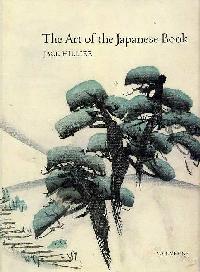
Jack Ronald Hillier (1912-1995) This study of art in Japanese books from the 1600s to 1951 covers artists, designers, woodblock cutters, and printers. It has over 900 illustrations, 225 of which are in color, plus a glossary, bibliography, and index of books and artists. As might be guessed from the reputation of the publisher, this heavy and pricy tome holds little interest for students of art in the more "vulgar" publications of late Edo and early Meiji periods. (WW) |
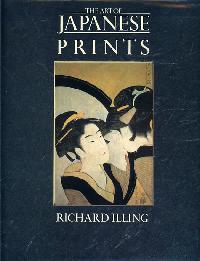
Richard Illing This book is widely viewed among English-bound ukiyoe fans as a standard and useful reference. It is, to be sure, a well-conceived overview of woodblock prints, and may well be the best introduction of its kind. It covers early prints, Harunobu and color prints, actor prints, beautiful women, landscape prints, nature studies, literature and legend, surimono and fan prints, and other styles, as well as modern prints. This will suffice until one realizes that there is a huge world of more popular, vulgar prints, including the news nishikie, that Illing, like most art historians, have studiously avoided. Illing's reference to one of Yoshitoshi's "One Hundred Views of the Moon" (plate 123, p 112) prints as an example of his continuing efforts "to produce popular broadsheets, increasing his market by designing prints which were issued as 'colour supplements' for popular newspapers" (p 161) is puzzling. It is not clear what Illing means by "broadsheet". It could not mean newspaper, since Yoshitoshi was never in the business of producing newspapers of any size. It smells more like an on-the-fly synonym for "oban", a large size of washi, which Illing dubs "standard format" in his glossary. The moon series, like most ukiyoe and nishikie published in Edo/Tokyo, was printed on oban washi, which is a bit larger than B4 paper today. In any case, the moon series, issued between 1885 and 1892, the last years of Yoshitoshi's life, was of very high quality and would not have been distributed by newspapers as supplements, but sold for a good profit at local book and print shops. A few pages at the end of this book -- on collecting, examples of signatures, date and censor seals, and a glossary -- are intended for newcomers interested in print details and collecting. Seasoned dealers and collectors, and serious researchers, will not find the one page of signatures, and the one page of seals, particularly useful. But before he nodded, even Homer began somewhere. And all things said, this book is not a bad place to start. (WW) |
Ishii Kendō Forthcoming. See "Seal of approval and date of print" section of Typical print details for scan of Ishii's images of aratamein used from Meiji 5 to Meiji 8 (1872-1875). |
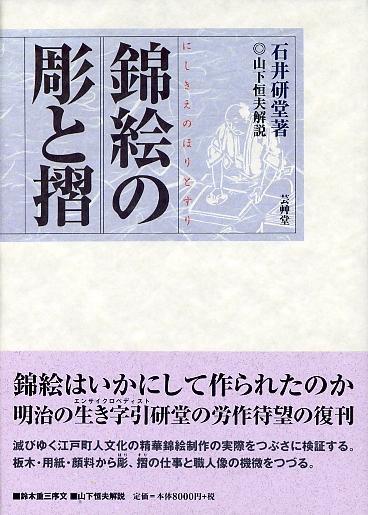
Ishii Kendō Forthcoming. |
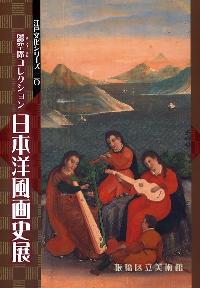
Itabashi Kuritsu Bijutsukan (Itabashi Art Museum) The arrival in Japan in the late 16th and early 17th centuries, of Portuguese, Dutch, English, and other Europeans as traders and missionaries, had an inevitable impact on Japanese science and art, as well as the politics of the Edo period (1603-1868), during which most of Japan was ruled by the Tokugawa clan. The political solution to the threat to Tokugawa power, partly posed by Christian factionalism in the southwestern provinces most exposed to the arrival of Europeans sailing from Southeast Asia and China, was to ban Christianity and limit commercial activities to Dutch which were more interested in trade than religion. The result was an influx of Dutch learning (Rangaku), Dutch drawing (Ranga), and other things related to Holland (Oranda). The main interest of this catalog for students of news nishikie are two paintings of cherubs, one by Ishikawa Tairo (1765-1817), a hatamoto samurai who painted in Dutch style, the other his older brother Ishikawa Moko (1763-1827). Also of interest are the engravings at the very end, showing a variety of unfurled banners used as titles, one borne by a pair of cherubs. The cherubs in one of Ishikawa Tairo's paintings (Exhibit 100, page 45) are strikingly reminiscent of the putti on Tokyo nichinichi shinbun nishikie mastheads. The work is signed "Tafel Berg" -- Ishikawa's Dutch name -- reflecting also "Tairo" (大浪), from the Chinese name (大浪山) of Table Mountain in Cape Town. (WW) See TNS two series, four stages and Cherubs and banners for more than you ever wanted to know about these topics. |
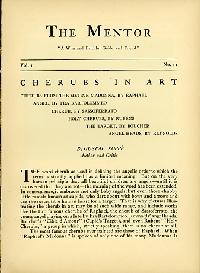
Gustav Kobbe This article, which contains 17 pictures, 6 of which are full page tinted sepia with a full page of text about the picture on the back, proved to be a dead end. There were no examples of cherubs holding unfurled banners bearing glad tidings, map legends, or newspaper titles. What inspired Yoshiiku to employ cherubs in his design of the Tokyo nichinichi shinbun nishikie remains a mystery. The point I would make here is that, when attempting to solve such mysteries, negative results are also valuable, as in science. Not until purchasing this item for twenty dollars, and waiting for its arrival in the mail, could I rule it out as a possible lead. (WW) |
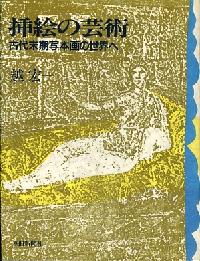
Koshi Koichi This is a study of illustrations in early Mediterranean and European manuscripts. The manuscripts range from the Greek and Roman classics to biblical literature. The illustrations depict war, bullfights, suicide, and other themes. There are ample citation notes and illustrations. The illustrations are fully attributed and are also listed in a detailed chronology that spans the 8th century BC to the 15th century AD. (WW) |
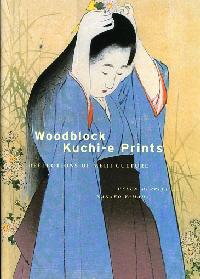
Helen Merritt and Nanako Yamada This book is the only extensive survey in English of woodblock kuchie (lit. "mouth drawings") -- a generic term for any (not only woodblock) frontispiece illustration. Woodblock kuchie, typically foldouts tipped or bound in the front of a book or magazine, were popular during the late 19th and early 20th centuries. Unfortunately, as objects of collection, they are usually found separated from their original volumes, from which they have taken for archiving or framing. The book is a mixed bag, arguably more reliable about art and literature, than about society and behavior. The historical, social, and psychological commentary is mostly warmed-over Japanology along the lines of "the Japanese" this and "Westerners" that -- which serious students of the human condition will want to take with a grain of salt. For collectors and dealers who depend on English, the book's most useful features are the appendices containing Biographical Sketches of 43 artists and Facsimile Signatures and Seals of 36 artists. This many artists are represented by only 80 illustrations -- 41 larger images in color, and 39 smaller ones in black-and-white. A book like this, more about art than of art, would have been more useful if a larger font had been used with less space on fewer thinner pages, to make room for lists of known kuchie by source and/or artist with panels of thumbnail images. Of interest to news nishikie fans are the biographical sketches of Kaburaki Kiyokata (at 3 pages, the longest) and Mizuno Toshikata (at 2 pages, the third longest). Kiyokata is correctly identified as Kaburaki Ken'ichi, the son of Jono Saigiku (Jono Denpei, Sansantei Arindo), one of the founders of Tokyo nichinichi shinbun and the main inspiration behind Yamato shinbun. It is also true that Ken'ichi was apprenticed to Toshikata, who worked as an illustrator for Yamato shinbun, and that Toshikata, as his name implies, was a disciple of Tsukioka Yoshitoshi. But the authors fail to make the link between Yoshitoshi and Jono, and in turn Ken'ichi. Yoshitoshi and Jono had known each other and collaborated as drawer and writer for at least two decades by the time Ken'ichi took an interest in art. Yoshitoshi had drawn a popular series of prints called Kinsei jinbutsu shi for Jono, who wrote the stories on the prints, which he distributed as monthly supplements of his newspaper. So Yoshitoshi was the big-name draw for the paper, and it was mainly his presence in Jono's life that inspired the young Ken'ichi to want to be a drawer. Only because of Yoshitoshi's failing health did Jono's son become a student of Toshikata and adopt the name Kiyokata. (WW) |
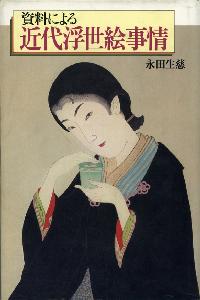
Nagata Seiji This book is a study of resources about the social and economic climate of woodblock prints in Japan during the late Tokugawa and early Meiji periods, usually referred to as "kindai" (recent, early-modern, pre-modern times) as opposed to "gendai" (present, modern times). Practically nothing is known about the conditions that prevailed in the woodblock industry or market until ukiyoe began getting lots of attention as objects of art, outside and then inside Japan, from the late 1880s. Most of what little is known is based on a handful of contemporary accounts, and on a few early 20th century (particulary Taisho) reminiscences by people old enough to remember the last half of the 19th century. Yoshiiku and Kawanabe as collectorsBut several things are clear. A number of people who have left their names in Edo history collected woodblock prints. A couple of prints in overseas museums bear the owner's seal of Ota Nanpo (1749-1823), a samurai official who wrote comic poems and gesaku stories. Santo Kyoden (1761-1816), another gesaku writer as well as a drawer, and Ryutei Tanehiko (1783-1842), the most famous gesaku writer, also left evidence that they were print collectors. Nagata also writes this (p 16).
Nagata traces the history of collection by foreigners in Japan back to Isaac Titsingh (1745-1812), a director of the Dutch East India Company in Japan, who made two trips to Edo. A catalog published in 1819, of belongings he left when he died, lists two paintings and eight woodblock prints he acquired while in Japan. There were probably others before him, and the numbers of collectors keep increasing. Nagata is of the opinion that Dutch and other foreign collectors at the time, even the German physician Philipp Franz von Siebold (1796-1866), saw woodblock prints through pretty much the same anthropological eyes as their Japanese counterparts. It was not, he says, until the end of the 1850s and into the 1860s that ukiyoe began to be greeted in Europe as fine art peculiar to Japan (p 23). Kuniyoshi and Yoshitoshi
|
|
At this time nishikie of the likes of Sharaku or Utamaro were not much welcome and when night fell before [the premises of the publisher] Suharaya in Kuramae [in Asakusa], an old-book dealer [furuhon'ya] who was a monk who had set up a shop was selling them for about one-sen each, but even then there weren't many people buying, and new prints by Kuniyoshi and Yoshitoshi and the like were more welcome. |
Awashima goes on to say that "it was an age when no one would make a fuss if you sold erotic books [waraie] on the main street. In the old-book dealer's shop, on the edge of Asakusa Mitsuke where [criminals / heads] were put on display, were famous rice cakes." He often saw such things in the shops that would put out old books by the well in front of the house [of the shop]. There were gamblers, he said, and they'd hustle the country folk who came to look at [the books] and empty their purses right there on the street.
Nagata is just warming up. He gets very serious when it comes to showing how contemporary collectors went about finding prints, how much they paid, and all the rest. Everything began to change in the Meiji period, especially after Europeans, of the opinion that they had discovered "art" in Japan, began shipping off entire collections. Then locals formed ukiyoe societies. Print shops began to produce catalogs. Nagata copiously sites and even illustrates such materials.
Mr. M's memoranda
Nagata uses contemporary sources to examine the plight of woodblock book and print publishers from mid to late Meiji, roughly from the late 1880s to the first decade of the 1900s. The woodblock publishing associations were forced to reorganize and eventually had to join the general publication unions that emerged. Woodblock publishers who didn't quickly innovate and adapt were unable to compete with the new copperplate, lithograph, lead type, and photogravure technologies that enabled mass printing at much lower costs, and simply went out of business.
The centerpiece of Nagata's study, for our purposes, is a chapter called "The movements of woodblock publishers [hanmoto] from the middle to the end of the Meiji period (from Mr. M's memos)". The chapter runs nine pages (32-40), eight of which are given to citations of memoranda attributed to the mysterious "Mr. M" -- who Nagata descibes as someone who amassed a large collection from the late 1880s to the mid 1910s and also published. Mr. M's family allowed Nagata to transcribe and publish the notes on the condition he not reveal their writer's name.
Gekko, Yoshitoshi, and Fukuda
The memoranda contain an enormous amount of detail concerning publishers, artisans, their working relationships, technology, compensation, management, the market -- not general comments, but specific times, places, names, amounts.
In Item 6, dated 1889/1890, Mr. M. writes that he began buying Gekko's Gekko Zuihitsu [Gekko sketches] and Yoshitoshi's Tsukihyakushi [One-hundred views of the moon], among others. He then lists a number of print publishers by their general address -- including "Ningyochodori, Fukuda" -- otherwise known as Gusokuya (p 33).
Item 7 follows up the list of publishers in Item 6 with a list of publishers and the drawers whose prints Mr. M recalls they were publishing at the time (p 33).
|
(7) [Meiji 22, 23] [1889/1890] Sasaki and Takekawa [are doing] Gekko prints [Gekko mono]. Akiyama, Yoshitoshi. Sawamura, Kyosai and Kiyochika. Fukuda, Yoshiiku and Kunichika and Chikanobu. Hasegawa, Kunichika and Chikanobu. |
Fact wise, this looks okay. As early as 1887, Takekawa Risaburo was publishing Gekko zuihitsu prints designed by Ogata Gekko (1859-1920). Akiyama Buemon was publishing Tsuki hyakushi prints from 1886. And Fukuda Kumajiro, the third generation Gusokuya, was publishing some of the few prints Yoshiiku was designing in the late 1880s. Fukuda also published Yoshiiku's Tokyo nichinichi shinbun nishikie (1874-1875), Kunichika's Tokyo kakushu shinbun triptychs (1876), and Yoshimura's Tokyo nichinichi shinbun triptychs (1876).
Fukuda, Yoshiiku, and Tonichi supplements
Having introduced the publishers by location (Item 6), then by drawer (Item 7), Nagata gives a few sections to gossip about selected publishers. Item 11 is devoted to Fukuda (Item 34-35).
|
(11) Fukuda's father (present [Fukuda] is adopted son, who was 25, 26 around [Meiji] 40 [1897]) liked the theater and published many actor pictures [yakushae]. It is said that [on the occasion of] the hundredth performance of Danjuro, [Fukuda] took a preliminary drawing by Kunichika to Danjuro for his inspection, and [Danjiro] had been carrying a Fudo Myoo [Acalanatha, god of fire] costume [funso] and others things and lost it backstage [gakuya]. When [Fukuda] asked [Kunichika] to again do a preliminary drawing saying [the first one] had been extremely well done [Kunichika] refused saying he wouldn't do the same thing a second time. [Fukuda] was extremely worried about the publishing of the Tokyo nichinichi shinbun picture supplements drawn by Yoshiiku. |
Fukuda turns to picture postcards
Immediately after this Mr. M remarks that, during the Meiji period (although he's been talking about the Meiji period all along), all publishing shops [shuppanten] competed in putting out many Sino-Japanese War prints [Nisshin Senso ga]. But they published too many, unsold prints piled up, and a lot of small publishing shops went out of buisness. He also writes that fewer people sought nishikie, while lithography and photogravure became more popular.
Mr. M concludes his item on Fukuda with this very interesting observation (p 35).
|
And when it came to actor pictures, [publishers] were pressured on account of picture postcards and photographs, and among publishers [shuppansha] and of course [sara ni nashi] publishing shops [shuppanten], Fukuda started a postcard shop, Takekawa and Yokoyama started round fan shops [uchiwaya], and even Akiyama did postcard sales and publishing on the side, and though actor picture drawers [like] Kunichika and [ellipsis] after [him?] Chikanobu and Kiyotada [ellipsis] [drew actors] [publishers] did not put out [their pictures] as nishikie. |
Fukuda ranks low among publishers
In Item 12, Mr. M ranks sixteen publishers according to the amount of prints they are publishing, in a note headed 1889, 1890, and indicates their quality in parentheses (p 35).
1. Marutetsu (high) 2. Sasaki (high) 3. Fukuda (middle) 4. Akiyama (high) 5. Sawamura (middle high) 6. Takekawa (high) 7. Taihei (high) 8. Yorozumago (high) 9. Kiyomizuya (middle) 10. Tunashima (high) 11. Matsui (high middle) 12. Moriki (middle) 13. Hara (middle) 14. Yokoyama (middle high) 15. Kodama (middle) 16. Ueno (middle)
Mr. M has four ranks -- high (7), middle high (2), high middle (1), and middle (6). Fukuda is among the six ranked at the bottom.
Yoshitoshi mad but not arrogant
To be continued (WW)
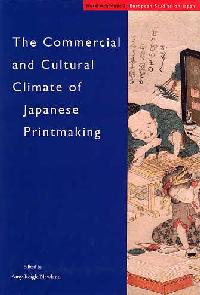
Amy Reigle Newland (editor) From Hotei's website:
What this means is that, for Euro 68.50, you will be buying a "conference book" -- in other words, a mixed bag. Here is what is in the bag.
The back matter includes a Chronology, Glossary, easy to read Index, and sixteen pages of Colour Plates. The geography of nishikie commerceMatthi Forrer's "The Relationship Between Publishers and Print Formats in the Edo Period" (pp 171-205) is the most interesting article in this book in terms of understanding the commercial aspects of nishikie publishing. Though Forrer's study "concerns the work of only a few designers from 1765 until the 1850s" it sheds light on the social geography of nishikie as a commodity. Forrer investigated "the print formats used by a few select print designers and the relationship between them and their publishers" in order to reveal "the composition of the audience for prints" (p 187).
Forrer examined the works of Harunobu, Kiyonaga, Utamaro, Eisen, and Hiroshige by publisher, and found the following pattern in the relationship between publisher location and type of publication in the case of Hiroshige's Edo meisho [Edo famous places] series (p 185).
Forrer arrives at this concludion about Hiroshige (p 188).
Such analyses of nishikie as objects in the economic lives of producers, sellers, and consumers is in much too short supply in a field dominated by more esoteric concerns about nishikie as "art" appreciated by present-day academtics and collectors. Yet there is something missing here. Of course publishers who sold directly from their print shops would want to be located in places frequented by the people who would be most likely to buy their publications. But prints are light and easily bundled and transported, over land or by water, to other points of sale. Forrer might have said more about the role of distributors and itinerant vendors. In any case, the roads taken into and out of Tokyo in the early years of the Meiji era were essentially the same as those described by Forrer for Edo during the period of his study. And the neighborhoods of early Tokyo were not that different from those of late Edo. So how did the locations of news nishikie publishers affect their sales? (WW) |
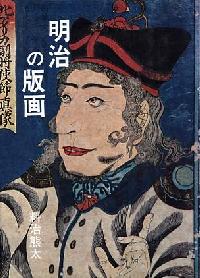
Ryoji Kumata This small book, with 20 pages of color plates in front and numerous black and white plates elsewhere, presents a broad survey of Meiji woodblock prints in 24 short topical chapters. Of interest here is a three-page chapter called "Eiri shinbun no hajime" [The beginning of illustrated news] (pp 62-64), in which Ryoji depicts and introduces four news nishikie. Ryoji calls Tokyo nichinichi shinbun (TNS) and Yubin hochi shinbun (YHS) news nishikie the first "nishikie no eiri shinbun" [nishikie news with illustrations]. He introduces TNS No. 1 (Itinerant priest murders and robs loyal wife) and remarks that he has 40 to 50 prints like in the TNS series. He then introduces TNS No. 813 (Man marries man who has been raised as woman), remarks that such stories are taken up on television today, and observes that not much has changed in society past and present, even with respect to the way such stories are reported as oddities. Ryoji goes on to show and summarize the stories in Nishikiga hyakuji shinbun No. 20 (Woman jumps into river unable to meet her sailor lover) and No. 22 (Man sneaks into second story of tofu shop). There are also chapters on copperplate prints, lithographs, and postcards. (WW) |
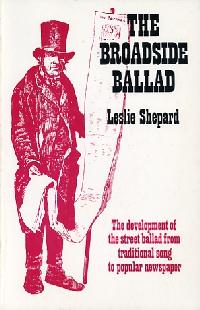
Leslie Shepard This is the most widely published and most interesting book by Shepard on "The development of the street ballad from traditional song to popular newspaper" as the cover blurb explains. It is illustrated with over 60 facsimiles in the form of black-and-white photographs, diagrams, and line drawings. The 1978 edition shown here is the first American edition of the first British edition published in London by Herbert Jenkins in 1962. (WW) |
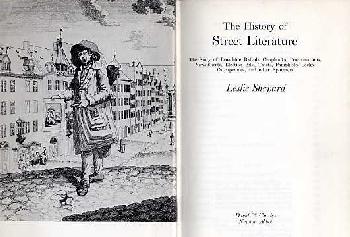
Leslie Shepard "This book is not intended to be a conventional history, with copious footnotes, every detail discussed to death, and all the reader's work done by the author," Shepard writes at the start of his preface (p 9). Scholarship is like make-up, the effects of which are destroyed if you can see it. All we can see are the effects of Shepard's scholarship. As the Preface continues, "Folklore, from which street literature developed, is essentially a shared experience, falsified by over-detachment or too much scholarly apparatus, and much of this story can only be told by implication." Shepard's implications are mostly showing facsimilies of street literature and letting it speak for itself -- literally, since broadsides of tales and gossip and news, though written, were also recited and even sung. The frontispiece (click of image of title page to see a larger scan) of what I would guess is a 18th (possibly late 17th or early 19th century) woodcut of a ballad monger. Several other images of street vendors who hawked news and other printed ephemera are shown in a chapter dedicated to "Pedlars and Patterers". The Contents are as follows: 1. The Varieties of Street Literature 2. How It Began 3. Printers and Publishers 4. Pedlars and Patterers 5. The Influence of Street Literature 6. Survivals 7. Examples and Notes The Pepys CollectionSamuel Pepys (1633-1703), the British civil servant and diarist, acquired broadside ballads that had originally been collected by a certain John Selden. Pepys built this collection into what remains the "largest and most complete of its kind" with "some eighteen hundred broadside ballands" (pp 31-31). In a five-volume compilation he published in his own time, Pepys arranged the ballads under the following ten headings (p 31). 1. Devotion and Morality 2. History -- True and Fabulous 3. Tragedy -- viz[t] Murd.[rs] Execut.[ns] Judgm.[ts] of God 4. State and Times 5. Love -- Pleasant 6. do. -- Unfortunate 7. Marriage, Cuckoldry, &c. 8. Sea -- Love, Gallantry, & Actions 9. Drinking & Good Fellowshipp 10. Humour, Frollicks &c. mixt. "On the verso of the title-page he [Pepys] quotes Selden's famous statement:" (pp 31-32)
Broadside balladsAll manner of newsy stories were told in entertaining verse, with woodcut illustrations, in broadsides and newspapers. Whereas many writers conflate "broadsides" with "broadsheets" and speak only of the latter, Shepard carefully differentiates these two forms of publications. Shepard's Glossary makes this distinction (p 224).
So kawaraban and other single-sheet woodblock printed matter in Japan are "broadsides" rather than "broadsheets". The Appendix consists of a facsimile of an eight-page 1832 "Catalogue of Songs and Song Books, Sheets, Half-Sheets, Christmas Carols, Children's Books, &c, &c, &c, Printed and Published by J. Catnach, Printer and Publisher." Shepard introduces the catalog with a description of the Catnach family, one of the most producive publishers of street literature in London, and gave this example of how many copies of a news ballad its presses could run off when pressed (p 215).
Sale of a WifeHere are the first and final of the 23 stanzas of Sale of a Wife. While some broadsides showed stories in verse form, this one presents a continuous text, with capital letters and punctation marks to delimit the couplets and quatrains. I have rearranged the text in verse form, but preserved the original case and puncutation. (Song 221, Page 177)
Shepard's note on this ballad provides just the right amount of commentary (p 208).
Shepard has written several books on broadside ballads and their printers. This one is social history at its best. (WW) |
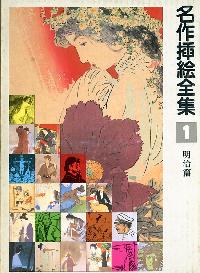
Shimonaka Kunihiko (compiler) 1. Meiji 2. Taisho: Historical novels 3. Taisho: Modern novels 4. Showa prewar: Juvenile novels 5. Showa prewar: Historical novels 6. Showa prewar: Modern novels 7. Showa prewar: War novels 8. Showa prewar: Mystery and suspense novels 9. Showa postwar: Historical novels 10. Showa postwar: Modern novels This set presents all kinds of illustrations in popular fiction and other literature from the Meiji period through the early postwar Showa period. Each volume contains about 130 black-and-white and 20 color pages. The first two-thirds of each volume feature page after page of illustrations with captions. The last one-third contains illustrated articles by various scholars. "Sashie" (inserted drawings) refers to any illustration, usually hand-drawn, that accompanies the text of a story, fictional or otherwise. Broadly speaking, however, sashie could be any illustration that is "inserted" into a publication, including quite commonly "kuchie" (frontispiece) prints, and less commonly looseleaf prints that accompany a publication as a "furoku" (supplement). As titles of the volumes suggest, sashie are typically associated with fiction. Many newspapers and magazines in Japan today continue to feature serialized novels or short stories. They still commission sashie drawers to illustrate the fictional action, and the illustrator is usually credited alongside the author's byline. Volume 1 leads off with news nishikie by Tsukioka Yoshitoshi (1839-1892), Morikawa Chikushige (dates unknown), and Ochiai Yoshiiku (1833-1904), all three of whom also illustrated books, magazines, and newspapers. Next come Takeuchi Keishu (1861-1943), Kawanabe Kyosai (1831-1889), Kajita Hanko (1870-1917), Mizuno Toshikata (1866-1908), Suzuki Kason (1860-1919), Kaburagi (sic) Kiyokata (1878-1972), and Kobayashi Eitaku (1843-1890), and seven other drawers, most of whom are best known for the kuchie they drew for popular novels and magazines. Of this second group. All such drawers drew their share of conventional sashie for books, newspapers, and magazines. Of particular interest here is Kobayashi Eitaku, who drew the Kakushu shinbun zukai no uchi news nishikie series written by Tentendo. Volume 1 shows, unfortunately not in color, Eitaku's famous "Hatamoto wife searches for fallen husband" nishikie illustrating a story reported in Enkin shinbun (Number 27, Keio 4-5-30 = 1868-7-19). See Eitaku's Shogitai for a translation and disucssion of this print, and for commentary on Eitaku's life and art. (WW) |
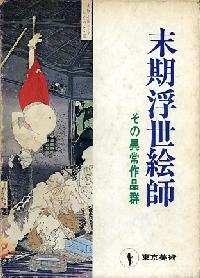
Suzuki Jin'ichi Suzuki, an art historian, has divided his small but informative book into three chapters. 1. The start of the opposition to bakufu (The quickening power of townsmen) Chapter 2 is particularly interesting because Suzuki argues that ukiyoe generally become a vehicle for journalism in the broadest sense of the word. His thesis that ukiyoe become "journalistic" in the late Edo and early Meiji periods is not predicated on the rise and fall of news nishikie, a relatively minor development in the history of late-period ukiyoe. Rather he argues that woodblock publishers found it more profitable to put out prints that conveyed information related to the times, and turned popular writers and drawers into commodities. Midway through his "form and structure" introduction to Chapter 2, Suzuki makes this general observation (p 39).
To further support his thesis that ukiyoe turned journalistic [jaanarisutikku], Suzuki devotes many pages to the content of, and expression in, late-period ukiyoe. He describes and analyzes content and expression under several thematic headings: politics, economics, diplomacy and communications, society, propaganda and publicity, and entertainment reading. Here, as in the introduction, Suzuki draws examples from all genres of ukiyoe, except news nishikie. Suzuki wraps up his discussion of themes as follows (p 66).
Suzuki devotes the final four pages of Chapter 2 to the advent of news nishikie and other examples of how woodblock publishers, drawers, and writers came to be closely associated with the development of newspaper journalism. His overview, though general, is commendable because he saves it for the end, as frosting on his cake. "I don't think one can discuss Japanese newspaper history," he says in conclusion to Chapter 2, "without acknowledging the ukiyoe journalism [ukiyoe jaanarizumu] that made free use of woodblock print media" (p 70). (WW) |
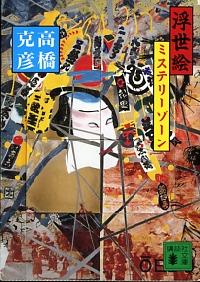
Takahashi Katsuhiko Takahashi flaunts his usual stuff as he delves into the stories behind the stories in an incredible variety of ukiyoe prints spanning the late Edo and early Meiji periods. Sparsely illustrated with black-and-white pictures, it includes three short sections on news nishikie, each of which makes a few general observations about the genre then explores a single print. The three prints whose stories he finds especially intriguing are: Tokyo nichinichi shinbun (Number 933) Tokyo nichinichi shinbun (Number 697) Yubin hochi shinbun (Number 532) Fifteen years after writing this book, Takahashi incorporated the world of news nishikie, and the gruesome homicide depicted in TNS-933, into an episode in the fourth volume of his popular Kanshiro hirome tebikae [Kanshiro promotion notes] historical mystery (Shosetsu subaru, June 2005, pp 364-369). In the first volume, Kanshiro is introduced as a disenfranchised samurai who becomes a publicist along the lines of a present-day advertising agent, and is tight with social outlaws like the gesaku writer Kanagaki Robun. (WW) |
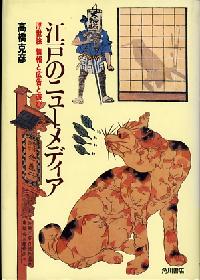
Takahashi Katsuhiko In this nicely illustrated book, Takahashi argues that ukiyoe, which devloped and flourished during the Edo period, were more than just artistic drawings, but also constituted a new medium for conveying news, advertising, and entertainment. Takahashi takes the reader on a tour-d-force of Edo art history, from the incredible perspectives drawn by Okamura Masanobu (1689-1756) in the 18th century, to Yoshiiku's Tokyo nichinichi shinbun nishikie and a bit beyond. (WW) |
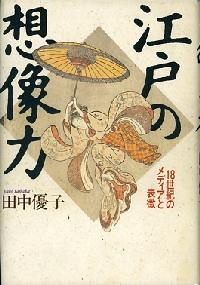
Tanaka Yuko This book is listed here because it introduces Suzuki Harunobu's "Shimizu no butai yori tobu bijin" [Beauty jumping from a stage in Shimizu], both on the cover and in the text (p 99). The picture supports Tanaka's contention that Harunobu, who is credited with developing the colorful nishikie style of ukiyoe, abandoned conventional actor and courtesan prints in favor of "mitatee" (analog drawings), which she defines as a "haikuization" of the classics (p 97). Mitatee were parodies of episodes in classical literature, in which historical figures or fictional characters were comically depicted in a contemporary setting. Two famous warriors engaged in a famous battle, for example, might be transformed into geisha who are posed or otherwise featured so as to resemble the warriors in battle. Such humorous works often fed on each other. Tanaka finds mitatee, most of which were based on the classical world, and not real life or actors or courtesans, difficult to call ukiyoe. "Moreover," she says, "by imposing the world of the classics on young urban boys and girls with a delicacy that would arouse practically no feelings of flesh or sex, Harunobu's drawings leapt from the ground, defied gravity, drifted in a surrealistic weightless world" (p 97). Tanaka captions a thumbnail black-and-white picture of "Jumping beauty" as follows (p 99).
Tanaka observes that "Jumping beauty" is not a mitatee but an "egoromi" (picture calendar). She points out that characters for "big, 2, 3, 5, 6, 8, 10" are hidden in the seashells that are drawn on the girl's clothing. And like most art historians, she claims that Nishikie originated from the production of such picture calendars. "Jumping beauty" is said to have inspired later designs of prints showing women leaping into the sea. The most famous such print is Yoshitoshi's depiction of Chikako plunging into the snowy Asano river after failing to get her father, the wealthy merchant Zeniya Gohei (1773-1852), released from prison. He and his son were arrested after they had contaminated a Kanazawa lagoon with lime, causing the deaths of fish and a fishermen who had eaten one of the fish. (WW) |
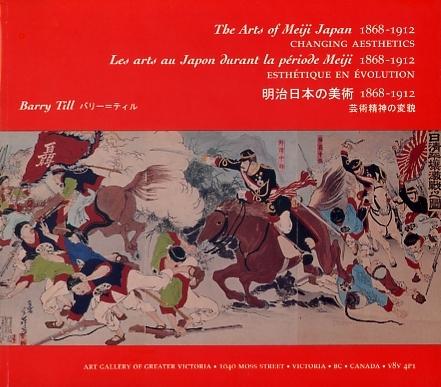
Barry Till バリー=ティル News nishikie have been introduced in several general exhibitions of Japanese "art" outside Japan. The exhibition of Meiji "arts" held at the Art Gallery of Greater Victoria in 1995 included a number of news nishikie. The English section of the trilingual catalog included the following paragraphs under the heading "Prints Used as Newspaper Illustrations" (pages 25-26).
CommentaryThe above descriptions and explanations are typically inaccurate and skewed. Yokohama mainichi shinbunIt is true that Yokohama mainichi shinbun, generally considered to have been the first daily newspaper in Japanese, was founded in Yokohama in 1870. It is also true that, in 1879, the paper was moved to Tokyo and renamed Tokyo Yokoyama mainichi shinbun. However, Tokyo nichinichi shinbun, Tokyo's first daily paper, and Yubin hochi shinbun, began publishing in 1872. By 1879, the circulations of these two papers greatly exceeded that the new arrival from Yokohama. Tokyo Yokohama mainichi shinbun was renamed Mainichi shinbun in 1886, which was renamed Tokyo mainichi shinbun in 1906. The paper was bought out by, and absorbed into, Hochi shinbun (formerly "Yubin hochi shinbun") in 1909. Today's Mainichi shinbun is unrelated to the paper that originated in Yokohama and moved to Tokyo. Its roots go back to Osaka mainichi shinbun and Tokyo nichinichi shinbun. Meiyo shinbunMeiyo shinbun was not a newspaper but a series of woodblock prints published in 1874 and 1875. The prints depicted heroes of the civil unrest that led to the downfall of the Tokugawa shogunate. The series was renamed -- and is better known as -- Meiyo shindan. See Meiyo shinbun / shindan: New tidings / stories of honor and glory for details. News nishikieYubin hochi shinbun (YHS) was the name of a series of woodblock prints, drawn by Yoshitoshi, depicting stories that had run in the newspaper of the same name. Similarly, Tokyo nichinichi shinbun (TNS) was the name of a series of woodblock prints, drawn by Yoshiiku, depicting stories that had appeared in the newspaper of the same name. Yoshiiku's TNS series began before Yoshitoshi's YHS series and amounted to nearly twice as many prints. Typical of such overviews of Meiji "art" in English, however, Yoshiiku is underplayed. Yoshiiku and Yoshitoshi were commissioned by woodblock print publishers, not by newspapers, to produce series of prints based on newspaper stories. Most such news nishikie were not newspaper supplements. Whether news nishikie were printed in especially "large numbers" is not clear. Both Yoshiiku and Yoshitoshi were commissioned to draw such prints because they were already famous. To what extent these prints became an "important source of income" is not clear. Both men were engaged in other drawing projects. While the news-related prints did their reputations and pocketbooks no harm, the series were very short lived. Drawings as illustrationsWhile some newspaper stories were illustrated with embedded woodcuts, TNS, YHS, and other news-related nishikie series were not newspapers, nor were they newspaper illustrations. There is no evidence that photography replaced woodblock prints as methods of newspaper illustration. The earliest newspapers, which were printed with woodblocks, were illustrated by woodcuts. As were used to illustrate earlier newspapers, which were printed with woodblocks and even movable wooden type. As papers came to be printed with presses using movable metal type, engraved drawings replaced woodcut drawings. While true that photographs came to replace drawings as illustrations of news stories, drawings remained -- and remain even today -- the standard method of illustrating serialized fiction in both newspapers and magazines. And drawings continue to be used to illustrate reports of trials in courts of law and other venues where cameras have not been allowed. Women as culprits and victimsMost "notorious crimes" involved either men killing women or women killing men. So what is the point of the observation that "many of [the most notorious crimes of the period] involved women as murderesses or victims of murder"? Exhibited news nishikieThe catalog includes the following prints under the heading "Newspaper Prints" (page 169). I have listed only the plate numbers and titles, as given in the catalog, following my own identifications in brackets.
The attributions and descriptions are haphazard when not wrong. Only one of the prints (TNS-748) is identified by number. The two TNS prints are attributed to "Utagawa Yoshiiku" and "Utagawa Toshiiku" -- though Yoshiiku did not go by "Utagawa" and he was never "Toshiiku". TNS-656 and TNS-747 are signed respectively Keisai Yoshiiku and Ikkeisai Yoshiiku. Among the listed prints, only those in the TNS and YHS series were news nishikie. And only the prints the KJS (Kinsei jinbutsu shi) series were newspaper supplements. Some other names, and descriptive titles, are also mangled. For example, "Takanawa" becomes "Takamawa" in the English and French titles of Kawabata Gyokusho's 高縄帰車 or "Takanawa kaeriguruma" (plate 1.12). The print shows exactly what its Japanese title states -- not "Takamawa Train Station" ("Gare de Takamawa") but a train returning on the stretch of track through the scenic Takanawa area along Tokyo bay. Kosome and Fukuchi portraitsOf interest to students of portrait nishikie, the color section of the catalog includes Adachi Ginko's Kosome (1.G Picture of Modern Japanese Woman in Western Dress in the "Kokon meifu no kagami" series and Kobayashi Kiyochika's Fukuchi Gen'ichiro (1.J Fukuchi Gen'ichiro) in the "Kyodo risshi no motoi" series. French and Japanese versionsThe French version appears to be a direct translation of the English. The Japanese version significantly departs from the English and French versions. For example, the French version of "like the Meiyo Shimbun (Illustrious Newspaper) and the Yubin Hochi Shimbun (The Postal News)" is "comme le Meiyo Shimbun (journal illustre) et le Yubin Hochi Shimbun (les nouvelles des Postes)" (page 45) -- while the Japanese version has only "Yūbin hōchi shinbun nado" [Yubin hochi shinbun et cetera] (page 66). The French version of "murderesses or victims of murder" is "meurtrières ou victimes de meurtres" whereas the Japanese has "higaisha, yoōgisha" [victims, suspects]. The Japanese term for English "Newspaper Illustrations" and French "illustrations dans les journaux" is "Shinbun no sashie" [pictures embedded in news [papers]" -- which clearly shows that the writers did not understand news nishikie as commodities apart from contemporary newspapers. (WW) |
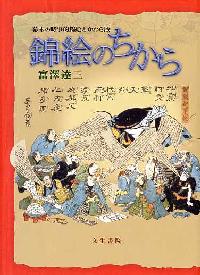
Tomizawa Tatsuzo This books is like old wine in a new bottle -- which is better than new wine in an old bottle. It's main value is the wealth of detail it presents in a highly organized manner about late Edo nishikie featuring catfish and measles. It is also useful as digest and synthesis of over seven decades of scholarship on the "journalismization" (jaanarizumuka) of woodblock pictures in Japan -- going back to the 1930s when Suzuki Jin'ichi first used this expression (see review of Suzuki's seminal work on late-period ukiyoe drawers elsewhere in this Bibliography). Young disciple of an old schoolTomizawa Tatsuzo is a young veteran (born in 1967, doctored in 1999) of a seasoned academic world concerned with the "news value" of late Edo and early Meiji woodblock prints. A specialist in early modern Japanese history, and materials related to history and folklore, he has published several articles on two well-known genres of woodblock prints -- "namazue" (catfish pictures) and "hashikae" (measles pictures) -- which are what this book is mostly about. As Tomizawa states in the afterword, the book is a heavily revamped version of his doctoral dissertation, Bakumatsu nishikie fushiga no kenkyu [A study of late Edo nishikie satirical drawings], accepted at Kanagawa University in 1999. While mainly about nishikie featuring stories about earthquake-causing catfish and measles, it also covers other genres of late Edo prints that relate to "current events" -- like foreigners in the country and the deaths of popular actors. Tomizawa is squarely in the "birth of news" school that mounted an exhibition and published a book and CD-ROM by this name (all reviewed in this Bibliography). He authored "Nishikie no nyuususei: Namazue, hashikae, Boshin senso ki no fushiga o megutte" [The newsness of nishikie: Centering on catfish picctures, measles pictures, and satirical drawings of the Boshin war period] (pp 192-203) in Nyuusu no tanjo [The birth of news] (Kinoshita and Yoshimi 1999). Nishikie no chikara, the book under review, follows essentially the same line of argument set down in this article. In fact, it takes its title from a subhead of the article, though in the subhead "chikara" [power] is typographically stressed. The "power" in the title alludes to the ability of nishikie to ease people's minds and lives by providing them with information about matters of current concern. Of particular concern were earthquakes and measles -- following the Ansei quake that devastated parts of Edo in 1855, and an outbreak of measles in Edo in 1862 -- with advice about how to deal with such matters. Tomizawa, also in 1999, collaborated with Yoshimi Shun'ya in the planning and construction of an image database of the kawaraban and nishikie shinbun in the Ono Collection at the Institute of Socio-Information and Communication Studies at the University of Tokyo. Their work is described in Yoshimi Shun'ya and Tomizawa Tatsuzo, "Kawaraban, nishikie shinbun shiryo no gazo deetabeesu ka: Shakai Joho Kenkyujo Ono Hideo Korekushon ni kan suru sagyo no kiroku" (Construction of Visual Database of Kawaraban and Nishikieshinbunin the Ono-Collection), in Tokyo Daigaku Shakai Joho Kenkyujo sosa kenkyu kiyo (The Research Bulletin of the Institute of Socio-Information and Communication Studies, the University of Tokyo), No. 13, 1999, pages 97-116]. Nothing new as information theoryTomizawa's book therefore fits very comforatbly into the growing body of literature that concerns itself with the "birth of news" and the development of "visual news media" in mid-19th century Japan. It does not pioneer new paths so much as straighten and smooth the going on well-trekked trails that go back to the early Showa period and even late Taisho periods, when academic travels into the emergence of journalistic wookblock prints began in earnest. Tomizawa's main contribution is to organize and analyize certain genres of nishikie in ways that make it easier to navigate the terrain of late Edo society in terms of how people responded to, for example, earthquakes and measles, and the deaths of famous kabuki actors. When it comes to the early Meiji development of news nishikie, however, Tomizawa defers to the already orthodox views of Tsuchiya Reiko and others of the same "birth of news" school of historical media studies. The new bottle into which Tomizawa puts his old wine has a trendy new label -- "jiji nishikie" -- which he attributes to Sato Kenji. Between 1996 and 1999, Tomizawa partipated in the "Kawaraban / shinbun nishikie kenkyukai" at the University of Tokyo, when the "birth of news" project was launched. Sato, also a member, often spoke of "jijie" [current event pictures] and "jiji nishikie" [current event color woodblock pictures] in a presentation of "Bakumatsu-Ishin-ki no jiji-fushiteki-na nishikie gun" [Groups of current-event-satirical nishikie of late Edo and early Meiji times]. In both of his articles in Nyuusu no tanjo, Sato contributed more than others to what I would call the "terminology" debate. Sato most cogently discusses "news" as something which empowers people with information about social and political incidents and events such as earthquakes, measles, wars, or murders. In what amounts to a dynamic "information theory" that is moderately between the extremes of conventional thinking of media as message, and post-modernist thinking about texts as contexts of behavior, Sato views information -- to use my metaphors rather than his -- as not merely a passive flow of data into the brain, but as a dynamic script which enables the brain to think and act differently. So Tomizawa's book, in following this "birth of news" view of information and nishikie, secures his niche in the world of early modern media studies. Its main interest to us is the concluding chapters, in which he extends the semantic range of "jiji nishikie" (current events nishikie) to include "shinbun nishikie" (news nishikie) and "nishikie shinbun" (nishikie news) -- thus linking his late Edo work with the early Meiji work of Tsuchiya Reiko, whose views of news nishikie he accepts without much question. In fact, the publisher of this book, Bunsei Shoin, is also the publisher of Tsuchiya's CD-ROM (2000), the current bible of news nishikie studies, which this book in some sense complements. ContentsNishikie no chikara includes the following chapters.
|
KuniyoshiTomizawa introduces the satirical work of Utagawa Kuniyoshi (1798-1861), partly to set the historical stage -- since Kuniyoshi survived the Tenpo Reforms of the 1840s, during which certain officials attempted to censor the sort of political lampoons that he and many thrived on. Kuniyoshi is also a reasonable starting point for Tomizawa's story because it was mostly his disciples who, inspired by his sense of humor, drew the catfish prints that fill nearly sixty pages at the heart of the book. The chapter on Kuniyoshi opens with a large black-and-white image of a "shinie" (death picture) memorializing the master, drawn by his principle student, Yoshiiku, and published by Hiroko [Hirooka Kosuke], in 1861. Yoshiiku and Hirooka were among the founders of Tokyo nichinichi shinbun in 1872. Yoshiiku started drawing the news nishikie that bore the name of this paper in 1874. Gusokuya was the principal publisher of this seris, but Hiroko published one of Yoshiiku's Taiwan expedition triptychs bearing the same banner. The chapter on the emergence of "current events nishikie" is an overview of both the history of scholarship on the "journalismization" of nishikie, and kawaraban with news-related texts and illutrations. |
Catfish picturesLegend has it that a huge catfish in the earth causes eathquakes. A keystone (kanameishi) resting on the head of the catfish somewhat prevents it from thrashing around. Daimyojin, a diety at Kashima shrine where the keystone comes to the surface of the earth, must push down on the stone in order to pin and totally immobilize the catfish. This legend enjoyed a revival after the Ansei earthquake of 1855. Hundreds of pictures were published showing catfish, often personified, as objects of pacification or extermination. Some prints show Kashima Daimyojin pressing the kanameshi down on the head of the catfish so it won't shake the earth. Many show the catfish being attacked and subdued by mobs of people, harpooned, or cut opened and broiled as kabayaki, the way eels are eaten. One print shows a catfish at the feet of a sumo wrestler with the graphs for "kanameshi" on his head. Another features Fire and Catfish grappling as sumo wrestlers. Another print, belong to a sub-genre having to do with the impact of earthquakes on personal wealth, depicts a catfish committing seppuku. "The catfish is apologizing for the damage it has caused the world through earthquakes, and compensates by spewing gold coins from its belly" (No. 15 pages 78, 112). Measles picturesUnlike most scholarly books in Japan, this one has a very nice index -- after which comes a 23-page appendix featuring small images and texts of the 84 measles pictures listed in a table in Chapter 5. In terms of total pages, then, measles nishikie are the dominant topic of the book. The vast majority of the drawers of the measles prints listed in the table were students of Kuniyoshi -- Yoshitora (14 prints), Yoshimori (14), Yoshifuji (9), Yoshitsuya (8), Yoshiiku (7), Yoshitoshi (4), Yoshimune (4), and so fourth. Practically all the prints have approval seals (aratamein), and the seals are for either the 4th or 7th month of Bunkyu 2 (1862). News nishikieIn the unnumbered final chapter, Tomizawa introduces a few nishikie which depict incidents in the last years of the Edo period. Included is an early 1868 print by Hiroshige showing children at play -- representing the parties that been feuding in the Boshin wars. Then he jumps to the appearance of newspapers and the first "shinbun nishikie" (news nishikie) series -- Tokyo nichinichi shinbun (TNS) drawn by Yoshiiku and published by Gosokuya, and Yubin hochi shinbun (YHS) drawn by Yoshitoshi and published by Kinshodo. From this point onward he is bascially following Tsuchiya Reiko. Tomizawa repeats Tsuchiya's views about news nishikie in Osaka as being really "nishikie shinbun" (nishikie news) rather than "shinbun nishikie" (news nishikie). He accepts, without critical examination, her argument that nishikie served as conveyors of "news" in Osaka before there were newspapers -- while in fact her own evidence testifies that, even in Osaka, "nishikie shinbun" were subjected to regulation and suppressed because they were viewed as something other than real "news". The only full-page image in the book, other than the color frontispiece, is a black-and-white image of TNS Number 445 showing an old tanuki ("raccoon dog") who had turned into a three-eyed monster (p 160). There is no explanation as to why this print, which was published some thirteen months after the story appeared in the newspaper and has little "news" value, constitutes an example of the "current events" quality of news nishikie. "Journalismization" ended before news nishikieThere is something deeply ironic about Tomizawa's assumption that news nishikie represent a later stage in the "journalismization" of nishikie. For late Edo "current events nishikie" -- the catfish, measles, and early Boshin war prints published in 1855, 1862, and 1868 or thereabouts -- appear to have been more timely and urgent than anything produced in the mid 1870s. Unlike the news nishikie, the late Edo prints stood pretty much alone as sources of information (including humor) about current events. And the "news" they conveyed appears to have been more timely and even more vital than the stories retold in news nishikie. Many of the TNS and YHS news nishikie appeared months, even years after the original reports in their namesake papers. And regugitated stories about murders, suicides, births of triplets, appearances of ghosts, or marital disputes in remote prefectures had less entropy (information value) than stories which sought to alleviate anxiety (even through humor) about the possibility of more earthquakes or outbreaks of measles in one's home town. In other words, there is a huge discontinuity between the development of nishikie as conveyors of news in the 1850s and 1860s -- and the advent of news nishikie as essentially "news souvenirs" in the mid 1870s. One can even argue that the true "journalismization of nishikie" began and ended before the appearance of news nishikie -- that kawaban and nishikie passed the "news" baton on to late Edo and early Meiji newspapers -- and that "news nishikie" are mostly examples of what I would call the "nishikieization of journalism" to echo Suzuki Jin'ichi -- or, to call a spade a spade, the "souvenirization of news". |
Danjuro VIII's suicideIchikawa Danjuro VII (1791-1859) was banished from Edo during the Tenpo Reforms, leaving his son, Danjuro VIII (1823-1854), to support the family of actors. Danjuro VIII was known to have prayed for his fathers amnesty at Naritasan, and that such a filial son should kill himself a few years after his father was allowed to return to the stage added to the public's (and his father's) shock. According to a contemporary account, Danjuro VIII committed jigai on the 6th day of the 8th month of the 7th year of Kaei (27 September 1854) at age 32 (Tomizawa 2005:56-57 and Note 26, citing the final volume of "Kogai zeisetsu" [Superfluous commentary on talk about town], a 7-volume collection of gossip about things that happened in Edo between 1791 and 1857, compiled by Jinsai Okina, about whom nothing is known). Assuming that "age 32" counts as one year the time Danjuro VIII lived in his mother's womb, he lived in the world outside for 31 years and some months. The term "jigai" was one of the most common expressions for suicide at the time. Literally "self-wound" or "self-injure", it could mean anything from cutting one's throat to seppuku -- most likely the former in the case of Danjuro VIII. A 1917 source observers that Danjuro VIII's death inspired over two-hundred nishikie, many of them shinie (Tomizawa 2005:57 and Note 27). Tomozawa categoried the Danjuro VIII shinie he observed in the collections of several Tokyo libraries as follows. categorizes the shinie in as follows as follows (Ibid. 57).
This, Tomizawa said, "was not just tsuizen [a pursuit of good by the those living in this world to pacify the demons that would harm the those who have gone on to the next world, but something written irresponsibly about the cause of Danjuro VIII's death . . . ." Most were hastily produced, without the names of their drawers, or of their publishers, who rarely took the time to obtain approval from the authorities. (Ibid. 57-58) Library marketNishikie no chikara is priced for the reference book market supported mainly by libraries and specialists. As a bound volume it is very well made, sturdy enough to withstand the heaviest abuse. Tomizawa's Nyuusu no tanjo presentation is superior aesthetically, but then Nishikie no chikara makes no pretensions of being an exhibition catalog. Mutilators will find only one color plate to tear out -- the frontispiece, showing a picture of Ichikawa Danjuro VIII (1823-1854), whose suicide in Osaka in 1854 set off an avalanche of memorial prints (see below). The edition being reviewed is described as a second printing published on 25 March 2005. Amazon.co.jp states that the book was published in Feburary 2004. And the "New Acquisitions in History of Art" listing of UC Berkeley Library for April 2005 states that a copy with a 2004 publication date was accessioned into the East Asian Library in Durant Hall, home of the East Asian Languages Department. The call number is NE1321.8.T66 -- in case you are on campus and want to squint at the hundreds of tiny black-and-white images with your reading glass of choice. Durant Hall, built a century ago on a campus founded in 1868, the watershed between the Edo and Meiji periods, has been retrofitted to withstand the sort of earthquakes that constantly threaten the San Francisco Bay Area. Nonetheless, EAL staff would be advised to place a suitably sanctified figure of Kashima Daimyojin in the stacks, just in case the hundreds of catfish in Tomizawa's book become restless. I would guess there are more catfish in Tomizawa's book than in the polluted marsh near my home. Its waters are getting clearer, though, which might explain the two earthquakes I felt while reading the book and writing this review. Or perhaps the quakes are a premonition of the divine retribution that awaits me for being so perverse in my criticism. (WW) |
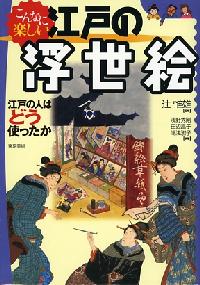
Tsuji Nobuo (compiler) A very entertaining introduction to ukiyoe in the daily lives of people of the Edo period. Not an academic book, but intended to instruct and delight. Well illustrated in color and black-and-white. Most of the text consists of tutorial captions which point out specific elements of prints. Unlike a lot of ukiyoe guides which focus on the high and elegant, this book gives equal space to all genres, including muzan'e and shunga. A four-page spread on news nishikie characterizes the prints as Meiji equivalents of today's tabloidesque weeklies that feature scandalous photographs and stories. (WW) |
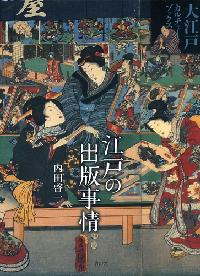
Uchida Keiichi Forthcoming. (WW) |
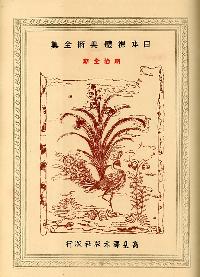
Uemura Masuro and Takamizawa Tadao Vol. 1. Suiko / Tenpyo / Fujiwara This early-Showa set of boxed oversize books presents works of art depicting some degree of nudity from early historical eras through the Taisho and early-Showa periods. Each volume presents about 100 plates, most in black and white on thick non-glossy paper, some in color on glossy paper, with commentary facing each print plate on thinner interspersing leaves. Volume 5, which covers the Meiji period, is of interest because it includes three news nishikie among 86 plates. The first plate is a beautiful woodblock-printed, hand-tilted, tissue-protected miniature reproduction of a Kunisada II triptych of bathing women. The next twelve plates are in color, and the first monochrome plate is YHS-532, one of the most spectacular prints in this series.
The comments on all three prints are by the lithographer, woodblock artist, printmaker, and poet Oda Kazuma (1882-1956). Oda writes this about news nishikie in his introduction to early-Meiji nude drawings (pp 10-11).
I cite this to show both (1) how easy it was for even people as close to the subject of woodblock art as Oda to err in particulars like dates (1872, rather than 1874 and 1875) and purpose (newspaper supplements or illustrations, rather than stand-alone prints), and (2) how practicing artists like Oda viewed news nishikie from the perspective of ukiyoe as art. Oda's attitude toward news nishikie was both equivocal and ambivalent -- equivocal because he couldn't just accept or dismiss them -- ambivalent because he saw they had some artistic merit. Oda didn't think much of the design of the human figures in YHS-532, but he found the colors and composition very ornate and dramatic. The "erotic and grotesque touches [mi]" of the picture, showing a naked girl being rescued, would appeal to the "fads of the present", he wrote, alluding to the popularity of "ero-guro" themes in late-Taisho and early-Showa Japan. Late-Taisho and early-Showa interest in news nishikie was mostly shown by students of journalism and popular culture like Ono Hideo and Miyatake Gaikotsu. However, it is clear from this volume on nudity in Meiji art that they were also of interest to artists cum critics like Oda, who focused on their artistic forms rather than their social functions. (WW) |
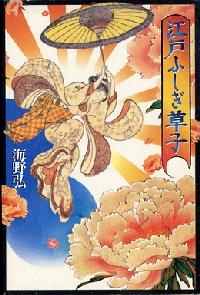
Unno Hiroshi This book has no relevance at all to the subject of ukiyoe or news nishikie. It is shown here only because of the use of Suzuki Harunobu's "Jumping Beauty" print, oddly reversed, on the cover. It is actually a collection of short historical fiction on a variety of aspects of life in the Edo period. The collection won the 4th Saito Ryoku'u Prize in 1995. Ryoku'u (1867-1904), whose life spanned the Meiji period, was a writer of historical fiction. (WW) |
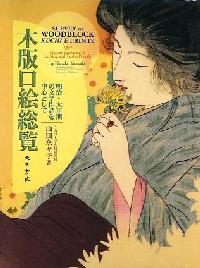
Yamada Nanako This book by Yamada Nanako render's Helen Merritt's and Yamada's 2000 English work, Woodblock Kuchi-e Prints (see review), all but totally obsolute for anyone able to read Japanese. The centerpiece of the book is a block of 140 pages of color plates featuring 1,045 kuchie -- of over 1,500 kuchie Yamada claims to have found, of about 2,000 that some researchers estimate were produced. The cover of the dust jacket bills "Nanako Yamada" as "Associate Member / Center of East Asian Studies / University of Chicago" -- as though the publishers felt they needed to boost the status of the author in the eyes of readers who might otherwise balk at shelling out 8,500 yen for the privilege of owning the best book in any language on the subject of kuchie. The book contains the following sections. 4 pages of color plates 3 pages of index 1-231 Main text [232] Guide to color plates 233-372 Color plates 373-374 Afterword 375-381 Index 394-383 English summary The text is attracitvely printed on cream acid-free paper. The 7 color plates in front, and the 1,045 color plates in back, are printed on non-coated white acid-free paper. The signatures are very securely sewn between very sturdy boards in a spine that will never break. The English summary presents a reasonable overview of kuchie as a form of story illustration in books and magazines. English-bound readers will want to keep their copy of Merritt and Yamada 2000, but know that this Japanese update is now the authority. Readers of English and Japanese alike need to keep in mind that Yamada restricts her definition of "kuchie" to colored woodblock prints that appeared mostly as frontispieces in literary magazines during the late Meiji and early Taisho periods. In the real world, the term "kuchie" refers to any illustration that appears at the front of a magazine or book -- including black and white photographs and lithographs. (WW) |
| Publishers |
| Matsuki Heikichi |
3
Kikan Uiyoe The seasonal journal Ukiyoe has occasionally carried articles on woodblock print publishers, who controlled the entire process, from conception to production and sales. Drawers and carvers, as well as printers, were essentially hired hands. Of interest in this issue, celebrating the 100th year of the Meiji Restoration, is the second feature on the Matsuki Taihei family of publishers. The family was closely associated with the career of Kobayashi Kiyochika (1847-1915), one of the last major drawers of the Meiji era. See Daikokusha Matsuki Heikichi for an article on the anthropology of this publishing family based on this issue of Ukiyoe among other sources. |
| Drawers |
| Kuniyoshi |
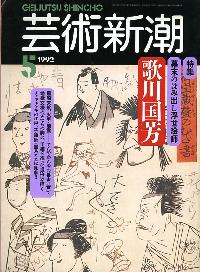
Geijutsu Shincho This issue of Geijutsu Shincho features one of the better overviews of the life and work of Utagawa Kuniyoshi (1798-1861), the most important woodblock picture drawer of the 19th century, bar none. Numerous mostly color plates show Kuniyoshi's unrivaled breadth talent to draw anything and everything, from orthodox and revolutionary to folksy and erotic. He left nothing to the imagination as he drew everything imaginable. His attitude toward the human condition -- beauty, absurdity, violence, authority -- was contagious among his disciples -- Kawanabe Kyosai, Ochiai Yoshiiku, Tsukioka Yoshitoshi, many others -- who kept his torch lit and passed it on. (WW) |
| Ekin |
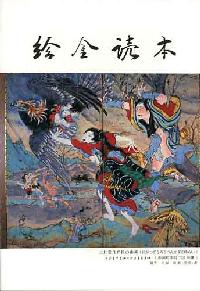
Chikamori Toshio Gruesome and bizarre pictures designed for their shock value have a long history in Japan. One Edo-period artist who contributed to this genre, and who remains very popular, was "Ekin" (1812-1879), who was born Kinzo (few commoners had family names before the Meiji period), the son of a hairdresser in Tosa, now Kochi prefecture. As a youth, Kinzo was skilled in graphic arts, and was apprenticed to a master of the Kano school of art named Ikezoe Yoshimasa, taking the name of Yoshitaka. At his master's recommendation in 1829, at age 16, he was sponsored by the Tosa domain to travel to Edo, where he studied under the master Soke Tohaku, an "artist laureate" appointed by the Tokugawa Shogunate to supply it with art. In addition Kinzo received instruction in the style of the Kano master Maemura Towa. In 1832, Kinzo returned to Tosa and arranged to obtain samurai status, which could be purchased via a sponsor. He changed his name to Hayashi Toi and became a painter under the patronage of a senior Tosa official, a highly prestigious and desirable position. He was later accused of producing forgeries and ignominiously dismissed. Kinzo's activities over the next 10 years remain unknown. He is believed to have wandered through Tosa province, subsisting on earnings as a dye artist, producing banners and fabrics. In any case, none of his works from this period remain. The period coincided with the Tenpo Reforms, in which "frivolous" forms of popular culture were suppressed by Mizuno Tadakuni, a senior official to the Shogun. After Mizuno was dismissed in 1843, kabuki made a comeback. Kinzo, now "Ekin" (literally "picture gold"), resurfaced and began to paint "shibaie" (illustrations of dramatic scenes). Many of these works, which remain from the 1840s and 1850s, are gruesome and bizarre, showing bloody brawls, decapitated heads, and other violent scenes from famous kabuki dramas, sketched to achieve maximum shock value. Whether or not such pictures brought more customers to the theaters, Ekin's drawings, depicting graphic violence, won him immortality. His shibaie were reproduced on paper folding screens and paper lanterns. They were even kept by people as a charm against evil spirits. Who would have thought that Ekin, who had trained in one of the most orthodox schools of art, would have gained fame for lowbrow works appealing to the hoi polloi? Even today, he remains a figurehead in his home prefecture of Kochi, which holds an Ekin Festival each July. This small book, with over 40 prints and sketches, half in color, is a nice introduction to the life and work of this most unconventional artist. (MS) |
| Kawanabe Kyosai |
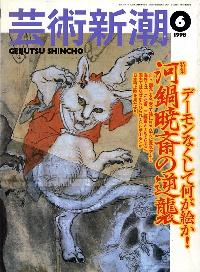
Geijutsu Shincho Kawanabe Kyosai (1831-1889) was a drawer as well as a woodblock book and print designer. He studied with Yoshiiku and Yoshitoshi under Kuniyoshi, but chose not to confine himself to the Utagawa camp of woodblock-printed picture drawers. Influenced by the Kano school, he also worked as an ink and brush painter. Though he left all kinds of work, he is best known as a caricaturist. Kyosai called himself a "gaki", which he wrote with characters meaning "art demon" (画鬼). This was a play on another "gaki" meaning "hungry devil" (餓鬼), a metaphor for wild child. His sense of humor was doubtlessly nurtured by Kuniyoshi's mischievous bent for parody and satire. Kyosai's patently unusual drawings, which feature all manner of mangaesque demons and beasts, enjoy a huge cult following in Japan as well as abroad. Or, as some contend, Kyosai was "rediscovered" in Japan after overseas ukiyoe fans ranked him second only to Hokusai. (WW) English works on Kyosai include the following exhibition catalog. Clark, Timothy |
| Yoshiiku |
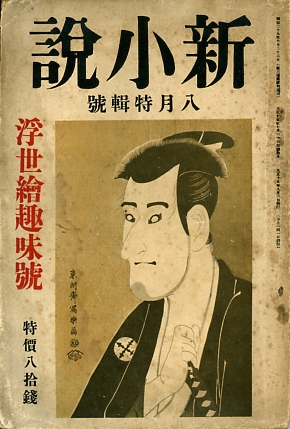
Higuchi Futaba A translation of Higuchi's article has been posted in the Articles section as Higuchi on Yoshiiku. This is a special issue of a literary monthly which featured stories by many of Japan's most popular writers. This issue carries what seems to be the only substantial article ever written on Yoshiiku's life. Takahashi appended this article to the first edition of Shinbun nishikie no sekai (see Takahashi 1986). However, it was dropped from the pocketbook edition (Takahashi 1992a), possibly just to keep the page count down, but more likely because its text is uninviting and even intimidating to look at. Unlike Takahashi's very accessible prose, Higuchi's writing was aimed at readers who took lots of characters, older forms of characters and older orthography, and older narrative styles for granted. Reproducing such a text as is, in a present-day publication intended for general readers, weaned on post-war language reforms, would definitely have been a sales turn-off. A translation-in-progress of Higuchi's article has been posted in the Articles section as Higuchi Futaba on Ochiai Yoshiiku. (WW) |
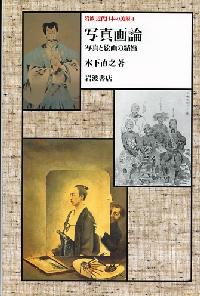
Kinoshita Naoyuki This book is a study of "shashinga" (photograph drawings), which refers both to drawings made from photographs, and to photographs of drawings (such as "go-shin'ei", which were photographs of drawings of the emperor and/or empress). The book closely examines the impact of photography on pictoral art in Japan, both as a method of portraiture, and as a means of recording events and objects related to human life from monuments and cutsoms to war and erotica. Of special interest to students of news nishikie is a discussion (pp 60-65) of the drawer Yoshiiku, who was known for his ability to draw people's faces. In 1867, Yoshiiku designed a series of 36 "kagee" (silhouette drawings) entitled "Makoto tsukibana no sugatae" (True figure drawings of moons and flowers). "Moons and flowers" is a metaphor for respected and favored illuminaries, in this case famous kabuki actors. Yoshiiku sketched the heads of his celebrity subjects from projections on the translucent paper of a sliding door. Tracing a projected silhouette was analogous to what a photographer did with a lens and silver plate in a box. Silhouette drawings, named after Louis the XV's finance minister, became popular in Europe from the late 18th century. Profile portraits, called "shades" in England and "silhouettes" in America, flourished in the 19th century. The popularity of silhouette drawings, which harked back to black-figures on early Greek vases, declined with the spread of daguerreotype. On an etymological note, the "makoto" in "Makoto tsukibana no sugatae" is written with two kanji that would read "shinsha" (true copy) in Sino-Japanese. The same kanji, reversed, form "shashin" (copy truth), the Japanese word for "photograph". The term still used today for taking or shooting a photograph or movie is "satsuei" (capturing a silhouette), while projecting a slide or movie on a screen is "toei" (casting a silhouette). The word for "photograph" is still "shashin" (true copy). Yoshiiku helped popularlize "shashinkagami" (photograph mirror), a style of woodblock-printed pictures drawn in a more European manner to emulate a photograph. In one early series, Yoshiiku and other Kuniyoshi disciples depicted Europeans engaged in activities associated with European life. Yoshiiku also published a series called "Haiyu shashin kagami" (Actor photograph mirror) depicting frontal drawings of actors, done in a more realistic style, reminiscent of a photograph. As Kinoshita points out, Yoshiiku did away with the black lines that outline the faces and figures in conventional woodblock prints (p 63). (WW) |
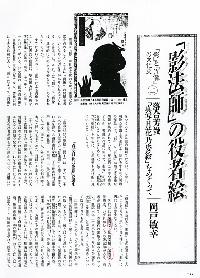
Okado Toshiyuki At the time he wrote this article, the art historian Okado Toshiyuki was affiliated with Suntory Museum in Tokyo, where he mounted an exhibition called "'Kagee' no jukyu seiki" [19th-century 'silhouette drawings']. The article provides detailed background information about Yoshiiku's famous actor silhouettes. Okada cites Yoshiiku's own remarks about the series, made in 1903, a year before he passed away. This article is Part 2 of a three-part series. Part 1 -- Puroroogu: "Kage" to "shozo" no kioku [Prologue: Memories in "shadows" and "portraits"] (Hyakka, April 1995, Number 390) -- expores the background of silhouettes and portraiture in Japan. Part 3 -- "Kagehoshi" and "suizen": "Kumana kikage" o megutte ["Silhouettes" and "memorial services": Centering on "Kumana kikage"] (Hyakka, September 1995, Number 395) -- discusses other Yoshiiku prints featuring silhouettes. (WW) Yoshiiku's Makoto no tsukihana no sugatae prints were put out by a publishing house called Kikujudo, operated by Hirooka Kosuke, and by a print and book shop (ezoshiya) called Hozendo, run by Maruya Tokuzo, a named assumed for business purposes by the gesaku writer Sansantei Arindo, otherwise known as Jono Denpei and Jono Saigiku. Hirooka also published Yoshiiku's Kumana Kikage series, among other works. Both Jono and Yoshiiku were members of a gathering called "Kogaren", an association of people interested in promoting art. Jono introduced Yoshiiku to actors who frequented his shop, and Yoshiiku designed some prints that were distributed exclusively through Jono's shop. And it was Kogaren that published Kumana kikage in 1867 on the occasion of the third-year memorial of the death of a certain Hagetsutei. (WW) |
| Yoshitoshi |
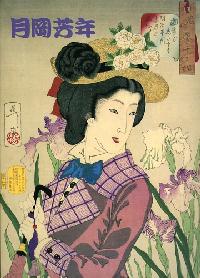
Akita Kenritsu Kindai Bijutsukan This is perhaps the nicest catalog of an exhibition featuring Yoshitoshi's prints. Two introductory articles on Yoshitoshi's life and work are thankfully brief at only two pages each. The next 38 pages feature 203 absolutely beautiful color prints. The prints are followed by 16 pages of attribution notes, a biographical chronology, a bibliography, and an index to the prints. The prints included in the catalog present a more balanced overview of Yoshitoshi's work than most publications. Two Yubin hochi shinbun nishikie (Numbers 425a and 532), and other newspaper related prints, are shown. The only kinds of work that are obviously not represented are preliminary drawings, and woodblock book and newspaper illustrations. The spine reads "Tsukioka Yoshitoshi: Utsukushikumo osoroshii" (Tsukioka Yoshitoshi: Terrifying though beautiful). The colophon has "Tsukioka Yoshitoshi ten katarogu" (Tsukioka Yoshitoshi exhibition catalog). The exhibition, sponsored by the Akita Museum of Modern Art and Nihon Keizai Shimbun, Inc. (Nikkei Shinbun Sha), was held from 25 June through 25 July 1999. (WW) |
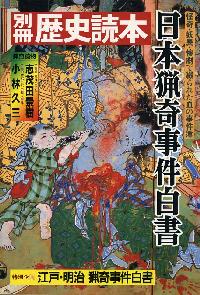
Makino Hiroshi (editor) "Ryoki" is written with two characters meaning "hunting the strange" and is the equivalent of "bizarre". This 280-page magazine-book recounts over a dozen famous bizarre incidents, including some particularly gruesome murders and other acts of mayhem involving dismemberment, cannibalism, infanticide and sadomasochism. Another item of interest is a 20-page illustrated section on torture by Nawa Yumio, a recognized authority on early law enforcement methods. This issue is of particular interest in the way it combines written accounts of many bizarre and violent crimes and the works of Edo and Meiji era artists who immortalized them. The glossy color photo section at the front includes all 28 prints from the Yoshiiku/Yoshitoshi Eimei Nijuhasshuku portfolio of 1866/67. A second section of gory artwork in the center features six color pages of prints by the kabuki artist Ekin plus a separate 4-page article on Ekin's career. Mystery author Shimoda Kageki also contributes an article about Kijin no Omatsu, a legendary serial murderess who appeared in prints by both Yoshiiku and Yoshitoshi. Accounts of many of the stories in this issue are covered in The Dark Side: Infamous Japanese Crimes and Criminals. (MS) |
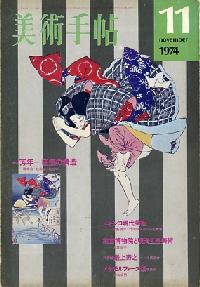
Bijutsu techo This issue of the monthly art journal Bijutsu techo devotes 70 pages, including 28 full-page plates, half in color, to the life and work of Tsukioka Yoshitoshi. None of the articles -- by Hashimoto Osamu, Matsuda Osamu, and Kasu Sanpei -- touch upon his newspaper nishikie, presumably because they reflect not so much the darkness and madness in his life, as in the lives of those who made the news. (WW) |
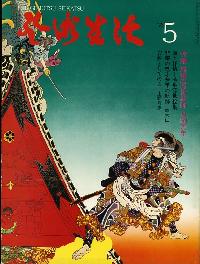
Geijutsu seikatsu There was a minor Yoshitoshi boom in the 1970s, and this is another very collectable issue of an art magazine that published an in-depth feature on this very popular drawer. Sixteen pages are devoted to color plates, the others to text with black-and-white illustrations. The black-and-white plates include Yoshitoshi's Yubin hochi shinbun nishikie (Number 623) which depicts the half-naked wife of an inn keeper and the girl who was accompanying her on the road, tied to a tree while wolves eat away at their defleshed legs and detached feet. The same story was featured in Sadanobu II's Nichinichi shinbun Osaka news nishikie (Number 11). The story later turned out to be false (Tsuchiya 1995:130-134, Newspark 2001:40). (WW) |
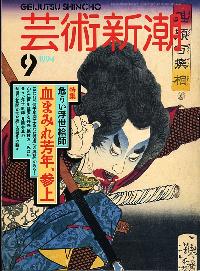
Geijutsu Shincho Review by MS forthcoming. |
Hanawa Kazuichi, Maruo Suehiro, Yoshitoshi, Yoshiiku In 1866, Tsukioka Yoshitoshi and Ochiai Yoshiiku, two young drawers who had both been apprenticed to Utagawa Kuniyoshi, one of the best-known master drawers of the times, published Eimei nijuhasshuku, one of the most controversial events in Japanese art history. This set of 28 "muzane" (atrocious pictures) depicts famous historical or legendary characters in scenes of graphic violence. Its critical success is attributed to the role muzan'e played as a cartharsis for those uncertain times, when the fall of the Tokugawa Shogunate appeared imminent. In their 1988 book, which has gone through at least three printings, Hanawa Kazuichi and Maruo Suehiro, two drawers with huge cult followings, provide reproductions of the original 28 prints from 1866, then stage a Shin [new] Eimei nijuhasshuku competition with 28 bloody works of their own. Their gruesome and grotesque drawings feature versions of old nursery tales, a Japanese "Jack the Ripper" drawn as a sparrow, the moment of Adolph Hitler's suicide, and the escapades of several notorious real-life serial killers. In perhaps the most original twist, a drawing by Hanawa shows Yoshitoshi, the drawer he was emulating, together with a courtesan named Maboroshidayu. In 1885 the two supposedly committed an "unspeakable" act, the details of which were never divulged. Whatever they did may have caused Yoshitoshi to suffer a nervous breakdown. (MS) |
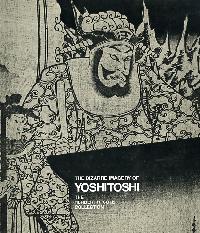
Roger Keyes and George Kuwayama This is a catalog of an exhibition held at the Los Angeles County Museum of Art, from July 10 to September 7, 1980, and at four other museums during 1980 and 1981. As a catalog it is par for the course, with a mixture of reasonably clear color and black-and-white pictures of the exhibited prints. It features two Yubin hochi shinbun nishikie -- Number 647 (The Suicide of Two Foreign Clerks), and Number 663 (Black Monster Attacking a Carpenter's Wife). It also shows a preparatory drawing, and a finished print, of "Hanai Oume Killing Kamekichi" (Number 11) in the Kinsei jinbutsu shi series, which was distributed as a Yamato shinbun supplement. Roger Keyes was responsible for the commentary on the prints and other print details. George Kuwayama wrote the Introduction, "Yoshitoshi and his art" (pp 8-21). Like other Yoshitoshi biographers, Kuwayama draws heavily on the uneven memoirs of Yamanaka Kodo (1869-1945). Yamanaka, briefly a student of Yoshitoshi, was employed by Yomiuri shinbun from 1896 and drew some kuchie, working with Takeuchi Keishi, a better known kuchie drawer. Yamanaka did not get around to writing about his mentor until the late 1920s and early 1930s. Much of what he writes is sketchy hearsay and cannot be verified, since no comparable accounts exist. What Kuwayama conjectures about Yoshitoshi and Yoshiiku is based entirely on Yamanaka's anecdotes (p 18).
The operational words here are "imagine" and "may". In fact we have no idea what really went on between the two drawers. If Yoshiiku's alleged "mistreatment" of Yoshitoshi explains the violence and blood in Yoshitoshi's 1860 prints, what explains the same violence and blood in the prints Yoshiiku drew in the same period -- some with Yoshitoshi in their remarkable collaboration, Eimei nijuhasshuku? (WW) |
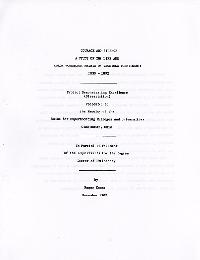
Roger [Stuart] Keyes This doctoral thesis, apparently written as part of a correspondence program, is divided into two parts -- the first a not especially impressive commentary on Yoshitoshi's life, the second a very exhaustive and valuable catalog of his works. Keyes, an art historian who has been employed much of his life as a cataloger, has, since getting his doctorate, been more active as an independent scholar and lecturer -- Visiting Professor in the History of Art at Brown University, Associate in Research at the Edwin O. Reischauer Institute of Japanese Studies at Harvard University, Director of the Center for the Study of Japanese Prints in Cranston, RI. While undoubtedly he deserves his reputation as a foremost authority on Japanese prints, and on Yoshitoshi in particular, there is a certain New Age sheen to the commentary in his dissertation. Inspired by the beliefs of his principle thesis committee member, Keyes apparently felt he is able to channel with Yoshitoshi's muse. Or whatever. Readers will come to their conclusions. (WW) |
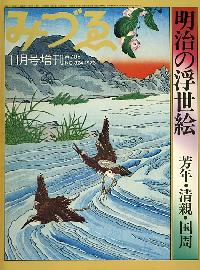
Mizue Introduction: pp 5-14 This special issue of the art journal Mizue is devoted entirely to Tsukioka Yoshitoshi (1839-1892), Kobayashi Kiyochika (1847-1915), and Toyohara Kunichika (1835-1900). Numerous color and black-and-white plates are interspersed by several articles. At the front is a kuchie reproduction of a landscape by Kunichika. While this is a nice addition to any collection of Yoshitoshi materials, the compilers and writers show no interest in his news nishikie or other newspaper related prints. (WW) |
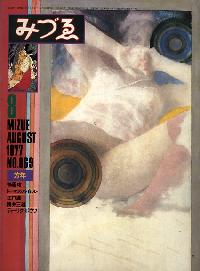
Mizue Another issue of Mizue, a monthly review of fine arts, with a significant feature about Yoshitoshi. The content is based on the "Yoshitoshi no zenbo ten" (The entire Yoshitoshi) exhibition, held at the Seibu Art Museum in Ikebukuro, Tokyo, from 29 July to 24 August 1977. Twenty-eight pages of color plates, including a foldout, are followed by 17 pages of black-and-white illustrated articles by the novelist Nosaka Akiyuki, the artist Yokoo Tadanori, and the art historian Sakai Tadayasu. There is a black-and-white picture of Yubin hochi shinbun nishikie Number 589b, showing a man plunging a knife into the mouth of his ex-wife. The attack takes place on a futon where apparently she had been with another man, who is grappling with assailant from behind as blood spurts from her mouth. The illustration is one of several examples in this feature of how Yoshitoshi depicted violence. (WW) |
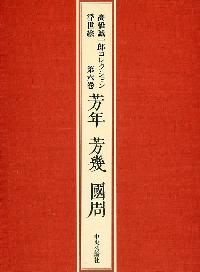
Narasaki Muneshige et al (compilers, commentators) This is one of those beautifully produced books with full-size tilted plates that make your mouth water and scream at the same time. You drool at the sheer quality of the reproductions. Then you cry because -- though Yoshiiku is one of the drawers featured in the title, and so many of 108 reproductions in the book ought to be of his works -- only three are by him. Talk about false representation. For all means and purposes, this is a Yoshitoshi book, as 62 of the prints are his, and 6 others are by his disciple Toshikata. The featured prints include a truly high-quality reproduction of one of Yoshitoshi's Yubin hochi shinbun news nishikie, YHS-425a (Plate 5). In his commentary on this print, Kikuchi Sadao gives a brief overview of news nishikie (p 157). Another YHS print, a Yoshiiku TNS print and an Eitaku KSZU print, and one of Yoshitoshi's KJS Yamato Shinbun supplements, are shown as small black-and-white illustrations in a more general article on the final stages of nishikie (pp 135-137, 142). The back matter includes six pages of information in English on the prints that appear in the book (i-xi). The given English title of the series is The Takahashi Seiichiro Collection of Ukiyo-e Paintings and Prints, and both the series and this particular volume are described as follows (Takahashi 1977.6:i).
|
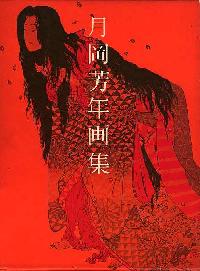
Segi Shin'ichi This well designed and nicely published collection includes many works not shown before or since. All the featured works are shown first in high-quality color images with minimal captions. Further explanations appear in the pages of text that follow. Both the images and the explanatory back matter are divided by genre. Pages 48-50 show "news nishikie" -- two Meiyo shindan (Enomoto Kamejiro Takeaki, So Gessho), two Yubin hochi shinbun (Numbers 568 and 491), and five Kinsei jinbutsu shi (Numbers 14, 16, 17, 5, and 11). Page 131 has a half-page explanation of "news nishikie". While the graphic quality of this book is extremely high (and well worth its high price on the used-book market), the captions and explanatory material fall seriously short of both editorial consistency and scholarly accuracy. Confusing timelinesThe two Meiyo shindan prints are captioned and described as having been published in 1875 (pp 48, 111) -- though neither has a seal date. The two Yubin hochi shinbun prints are said to have been published in 1874 (pp 48, 111) -- though their seal dates are respectively June and April 1875. The chronology of Yoshitoshi's life states that the publication of Meiyo shinbun began in 1873, while the "nishikie edition of Hochi shinbun" was produced in 1875 (p 138). The "news nishikie" section gives yet another timeline for the publication of the two series (p 131).
Apart from the confusion of dates -- Segi, like many Yoshitoshi writers, seems unaware that Yoshiiku was one of Tonichi's founders. Nor does he seem particularly interested in clarifying the relationships between the woodblock publishers, the newspapers, and the drawers. Share same publisher and carverWhy, in any event, does Yoshitoshi "take a brush to Meiyo shinbun" -- as though to compete with Yoshiiku -- a year before Yoshiiku is said to have begun producing what Segi implies was the "nishikie edition" of Tonichi? The earliest seal to appear on any Meiyo print is October 1874. The last Series 1 YHS prints were probably published between September and December 1875, though a couple might have been published in early 1876. The published Series 2 YHS prints have December 1876 dates, while an unpublished print has a February 1877 date. Nor is there evidence that Yoshitoshi "won" a battle. It is not even clear that either drawer seriously considered themselves at war. Both appear to have been too absorbed in their own lives and projects to worry about the other. Yoshiiku had long been involved in publishing ventures that gradually led him away from nishikie. And -- at the time he and Yoshitoshi are supposed to have been battling each other -- they were sharing the same publisher and carver. Yoshitoshi's Meiyo series was put published by Gusokuya, who produced Yoshiiku's TNS series. Moreover, practically all Meiyo prints were signed by Watanabe Horiei, who carved most of the TNS series. The two nishikie series even had the same bright red margins, and used the same styles of showing seal, publisher, drawer, and carver particulars. In any event, during 1875, Yoshiiku (TNS's drawer) and Takabatake Ransen (aka Tentendo, TNS's principle story writer) became busy with the launch of Hiragana eiri shinbun, soon renamed Tokyo hiragana eiri shinbun and then Tokyo eiri shinbun -- Japan's first illustrated newspaper.(WW) See Meiyo shinbun / shindan: New tidings / stories of honor and glory and YHS news nishikie: Two series, three stages for more than may want to know about these two series of prints. |
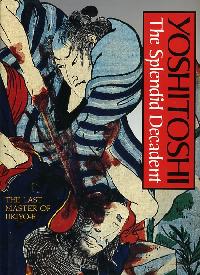
Segi, Shinichi [Shin'ichi] Though the colophon does not say so, this book is an English version of the following publication. Segi Shin'ichi This is the most comprehensive introduction to Yoshitoshi in English -- notwithstanding Roger Keyes' doctoral dissertation (Keyes 1982). Though the dissertation is considerably cheaper, and is immediately purchasable, it is not nearly as broad in scope, and it lacks illustrations. Still, anyone familiar with a particular subject in this book is likely to find errors of fact and interpretation, if not awkward writing, that will cast a shadow of doubt on the credibility of the book's coverage of other subjects. Take, for example, the following quotes (of many possible) from a section called "A Career in Newspaper Illustration" (pp 48-57), which includes color plates and black-and-white figures of some of Yoshitoshi's news nishikie and newspaper supplements.
1. When did Tokyo nichinichi shinbun (TNS) begin publication? Sometime in 1874, two years after Yubin hochi shinbun (YHS) came into existence? The copy editor and fact checker must both have been asleep on this one. TNS first appeared in March, YHS in July, 1872. The first TNS nishikie appeared sometime around August 1874. 2. Were Yoshiiku's TNS nishikie included with issues of TNS? No. The woodblock prints were conceived, produced, and distributed by an independent publisher. 3. Was Yoshitoshi "taken on" by YHS in order to produce the news nishikie that bore it's name? No. Yoshitoshi was employed by, again, a woodblock publisher. In fact, a number of woodblock publishers in Tokyo, Osaka, and elsewhere recycled news reports from TNS, YHS, and other newspapers in nishikie designed and narrated by drawers and writers they themselves commissioned. 4. Was Yoshiiku TNS's first choice when it looked around for an illustrator? No. Yoshiiku was one of TNS's founders and one of the owners of Nipposha, its publisher. Besides which Gusokuya, a woodblock publisher, came up with the idea to produce the TNS nishikie as a Gusokuya enterprise in the presence of Yoshiiku, a close acquaintance. The TNS nishikie were created by Yoshiiku, with Sansantei Arindo (Jono Denpei, also a TNS founder), Tentendo (Takabatake Ransen, another TNS writer), and four other writers, all working for Gusokuya. One could go on and on. Discussions of individual prints and series, in the back of the book, repeat and amplify such errors. Yoshitoshi is said to have produced "upward of fifty illustrations of strange, humorous, and sensational events in the news" (p 131) -- but more than sixty YHS nishikie had been discovered and cataloged well before this book's writing. There is a wealth of information in this book -- including, at the end, a gossipy four-page "Biographical Chronology" and a very skimpy "Bibliography" -- but it must be read with caution. The graphics and binding, at least, are of the usual high quality associated with Kodansha art books. (WW) |
Soya Shinji, et al Limited to 1,200 copies, this huge two-volume collector's edition contains full-size color reproductions, all hand-tipped plates, representing 84 of Yoshitoshi's most famous violent works, including the entire 28 prints from the Eimei Nijuhasshuku (1866), of which 14 are by Yoshiiku. All plates have brief captions in English. Of particular interest are Yubin hochi shinbun nishikie No. 623 (circa 1875), showing two women, left tied to trees by robbers, being eaten by wolves (the original Hochi story, based on a false report, also inspired Nichinichi Shinbun No. 11); the famous pregnant woman torture scene in "A House at Adachigahara in Oshu" (1885); "Shochikubai Yushima Kagegaku," depicting the romantic firebug Yaoya no Oshichi, who was burnt at the stake for committing arson; and two later prints -- "Kijin no Omatsu Kills Shiro Saburo" and "A story of Sano Jirozaemon" (both 1886) -- originally done by Yoshiiku in Eimei but challenged by Yoshitoshi 20 years later. A separate volume includes a short introduction by the novelist Mishima Yukio (1925-1970), and commentary by Soya Shinji, Yoshitoshi-style Nihonga artist Kaburaki Kiyokata (1878-1972), and art historians Tanemura Tokihiro and Yoshida Susugu. At the very end are 92 more images in black and white, and a two-page overview of Yoshitoshi's life, in English, by Soya. (MS) |
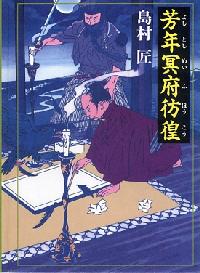
Shimamura Sho This novel opens with a scene depicting Yoshitoshi in a candle-lit room at a geisha house at work on a pornographic drawing of a woman provided by the man who commissioned him to draw her. He anticipates having his way with her when he's finished the drawing -- apparently part of the deal -- except she turns out to be in her period, which sets off his reactions to blood. Yoshitoshi had already concluded that the girl's heart was not in his art, and the blood just gives him a clearer reason to abandon the girl and make his way home. On his way he witnesses swordplay at Ueno Hill, where Shogitai holdouts loyal to the Tokugawa clan had recently fallen in a battle with government troops. The second chapter of the novel opens with a disciple trying to arouse a sleepy Yoshitoshi from his quarters to make sure he keeps an appointment with a publisher. The opening of Yashiro Seiichi's play Edo no rokudenashi, published and staged in 1982, about a decade before Shimamura's novel, opens with a minder paying a call on Yoshitoshi and catching him with a woman. In the novel, as in the play, Yoshitoshi is surrounded by people who are constantly looking after his interests, and someone is always walking in on his dreams. Shimamura was born in Yokohama in 1961. He graduated from the Japanese language program in the Department of Education of Yokohama National University in 1985 and taught at a private secondary school for girls in Kanagawa prefecture. In 1987 he quit to become the editor of a trade magazine for dentists. Later he worked as an ad-hoc instructor at a high school in Kanagawa prefecture. In 1999 he received the 6th Matsumoto Seicho Prize for Yoshitoshi meifu hoko. (WW) |
Soya Shinji This is informative overview of Yoshitoshi studies, by one of the field's major contributors, includes 15 color and 45 monochrome plates. The color plates include comparisons of significantly different editions of two prints in Yoshitoshi's Shinsen azuma nishikie (Newly selected eastern nishikie) series of diptychs (1885-1889). One of the diptychs is the famous Kijin Omatsu Shirosaburo o gai su zu (Picture of Demon Omatsu injuring Shirosaburo), which depicts the notorious Omatsu stabbing her husband, Shirosaburo, as he carries her on his shoulders across a stream (1886). The series of diptychs, and the Kijin Omatsu print, are introduced by Cathrine E. Lowther at Sinister Designs. Lowther's Kijin Omatsu, though, represents a design variation that falls between those shown by Soya. Design variations are significant because they reflect the effects of censorship, changes in taste, and cost-cutting shortcuts. Here the cause for seems to be taste and economics. The first edition of the Kijin Omatsu print, as shown by Soya, is richly printed in saturated colors. It includes a streak of blood-orange between the brown mountains and blue sky on the horizon -- and blood on Shirosaburo's neck. Lowther's intermediate edition used essentially the same color scheme (the pigments appear to be lighter) -- but without blood. The color scheme of the later edition has changed. Fewer, and different, colors are used, and the colors are more subdued. The entire sky above the rim of the mountains is white with a tinge of the purple, and again there is no blood. Soya remarks that the original edition reflects Yoshitoshi's design (p 16). Later editions, including those made by other publishers who bought the blocks from the original publisher, reflect the tastes of the publishers and/or printers. Publishers, not drawers, owned the blocks and could do what they wanted, especially after the first edition, which was usually overseen by the drawer. Later editions could be altered to accommodate the publisher's own tastes, including the desire to cut costs by using fewer blocks or colors. (WW) |
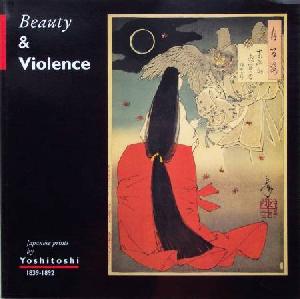
Eric van den Ing and Robert Schaap This exhibition catalog, introduced by John Stevenson, presents works selected mainly from the collections of members of the Society for the Arts. The exhibition was hosted by the Van Gogh Museum in The Netherlands, the Kunstmuseum Dusseldorf in Germany, and the Philadelphia Museum of Art in the United States between April 1992 and March 1993. The catalog is typically structured -- An introduction called "Violence and Serenity" (8-28); the catalog, the first half in color (31-96), the second half mostly particulars on the works in the first half (97-164), and the usual back matter. Of special interest is a paragraph on Yoshitoshi's news nishikie in Stevenson's introduction; a one-page color presentation, from the exhibition, of a triptych Yoshitoshi drew for the Yubin hochi shinbun; and in the back, a two-page list of 60 of Yoshitoshi's Yubin hochi shinbun news nishikie with brief descriptions of each. Stevenson on Yoshitoshi and
|
|
Yoshitoshi's livelihood at this time [1874] was based on prints he designed for the Yubin hochi shinbun ('Postal news'). These prints were issued separately from the newspaper, often as monthly supplements for subscribers. They illustrated sensational local news stories, such as a great fire or the exhibition of a beached whale (colour ill. 25.59 and ill. 25.58). Such images were unusual in showing specific events in common people's lives, which had not been considered suitable subjects for ukiyo-e before. These newspaper prints are evidence of Yoshitoshi's fascination with and sympathy for the foibles of his fellow men and the idiosyncrasies of human relationships. The common thread running through Yoshitoshi's prints is a preoccupation with human emotion. His best designs are of people under stress, confronting physical or psychological crises. He did not design straight-forward landscapes or bird-and-flower prints. The background, for example, of a print such as Denkichi presenting a severed head to his lord (ill. 45) may be beautifully drawn, but it is the human figures that always hold the dominant interest in Yoshitoshi's prints. |
After claiming that Yoshitoshi's news nishikie are examples of his fascination with the human condition, Stevenson refers to another work to make his point. Having troubled himself to mention the news nishikie, Stevenson is in a hurry to move on. He's just not interested.
Stevenson on Yoshiiku
The presentation of Yoshitoshi's Yubin hochi shinbun nishikie triptych -- No. 1055 according to the book, but No. 1155 according to my magnifying glass -- begins with the following observation about the start of news nishikie (van den Ing and Schaap 1992:51) [bold emphasis added].
|
Before the Meiji restoration in 1868 only a few newspapers were published in Edo, and these mainly concerned themselves with foreign news. The events of 1868 spawned a large number of short-lived newspapers. Only in the 1870s did newspapers gain a firmer foothold in Tokyo society. In 1874 Yoshitoshi's former rival Utagawa Yoshiiku (1833-1904) started collaborating with the Tokyo nichinichi shinbun ('The Tokyo daily newspaper'). His task was to illustrate popular news items, which were then sold as single sheets. Soon afterwards Izumiya Kinbei, who owned a rival newspaper, the Yubin hochi shinbun, hired Yoshitoshi to illustrate news items from his newspaper, because he wanted to equal that success. The Yubin hochi shinbun had been founded in June 1873. It was published five times a month, comprising nine woodblock printed sheets. Yoshitoshi was keen to collaborate since it gave him the chance to illustrate a variety of subjects. But he must also have been tempted by the chance to outshine Yoshiiku. These newspaper prints should not be seen as colour supplements as we know them today. A particular news item was used as a starting point of course, but they were sold commercially, like other woodblock prints. It is fascinating to look back to the 'yellow press' of more than a hundred years ago. Sometimes the prints speak for themselves, but in other cases they only start to live after one has read the news item that is being illustrated. The subjects of this series are summarised elsewhere in this catalogue and the reader will notice that the variety of subjects is indeed staggering. |
The writers of this passage are enthusiastic about the "yellow press" of yesteryear and the continuing saga of Yoshitoshi's rivalry with Yoshiiku. However, their account of the birth of news nishikie is not factual. They know that Yoshiiku and Yoshitoshi had been rivals since their years together as understudies of Utagawa Kuniyoshi (c1797-1861), and their collaboration on the Eimei nijuhasshuku. Their focus on Yoshitoshi and his more widely acclaimed art, though, comes at the expense of understanding the conditions which enabled his less recognized work, and of understanding Yoshiiku, who is rarely mentioned in surveys of Japanese art, and mostly in connection with Yoshitoshi.
Yoshiiku's "collaboration"
Yoshiiku did not begin collaborating with Tokyo nichinichi shinbun in 1874, or ever. He was one the founders of the paper in the spring of 1872. His partners were Jono Denpei (the gesaku writer Sansantei Arindo), and a bookstore manager and publisher. Yoshiiku, and Jono and a few other writers, joined forces with the publisher Gusokuya to produce the news nishikie that bore Tonichi's name for about a year beginning in the late spring or early summer of 1874.
Yubin hochi shinbun (Postal dispatch news) began publishing on 15 July 1872, a few months after Tonichi. It was founded by Konishi Gikei with the backing of Maejima Hisoka, who had started the postal system the previous year. The paper was designed to be distributed through the new postal system.
Yoshitoshi's involvement with Yubin hochi shinbun seems to have gone only as far as Kinshodo, the publisher which produced all the news nishikie that bore the name Yubin hochi shinbun. Practically all issues appeared between February and August 1875. The last two came out in late 1876 and early 1877. Yoshitoshi drew the pictures, and others (including a rakugo storyteller and an actor) narrated the accompanying stories. After (if not during) this period, the newspaper itself seems to have commissioned another publisher to produce true supplements of a completely different intent and design.
Back matter matters
The minutiae in a catalog, more than the pictures, are what make the catalog important as a research resource. Not only are the illustrations in this catalog excellent, but the detailed lists of Yoshitoshi works in the back are even better. There are, however, some oversights and errors -- to be expected in a field that is still, in many ways, being explored. See YHS Known Prints in the Articles section for an overview, with updates and corrections, of the information this book provides about YHS nishikie. (WW)
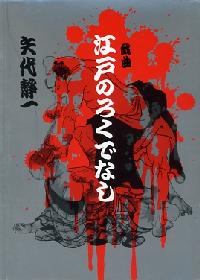
Yashiro Seiichi (b1927) This is a scenario of a play performed at Seinenza in Tokyo and elsewhere from December 1982, directed by Suzuki Kan'ichiro, and starring Nishida Toshiyuki as the good-for-nothing Yoshitoshi. Despite Nishida's popularity, and the fact that he had come to tv and film via Seinenza, the drama received only even par ratings. The story opens in the early afternoon of the 13th day of the 3rd month of the 4th year of Keio (1868), during the last days of the Edo period, at Yoshitoshi's temporary abode in the residence of a shop in Ginza Hachikancho (now Ginza 8-chome). One of Yoshitoshi's minders announces himself and walks in. The room is strewn with drawings, brushes, a drawing tray, sushi boxes, and clothing. No sign of Yoshitoshi. Maybe he's sleeping. The minder calls but gets no answer from the next room so he opens the fusuma. The storm shutters have been closed but there is some feeble light from an oil lantern, and a very unusual scene unfolds before his eyes. Yoshitoshi and a woman have reconstructed the scene on the Inada Kyuzo Shinsuke print in the Eimei nijuhasshuku series he had finished the year before, which shows a half-naked woman trussed up-side down as a man with a sword prepares to gut her the way one cleans a hanging frogfish. A woman with the graces of a samurai daughter, who the minder has brought to introduce to Yoshitoshi, averts her eyes in shock. The second chapter of Shimamura Sho's novel, Yoshitoshi meifu hoko [Yoshitoshi's wanderings in hades] (1991), opens with a disciple trying to arouse a sleepy Yoshitoshi from his quarters to make sure he keeps an appointment with a publisher. In both of these fictional stories, Yoshitoshi was surrounded by minders, and someone was always walking in on his dreams. (WW) |
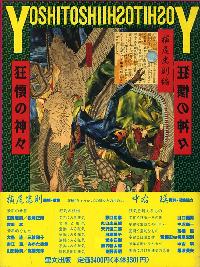
Yokoo Tadanori This odd volume is a work of genius or madness, depending on whether you like psychobabble. It is more a cult publication than a serious contribution to Yoshitoshi studies. There are numerous color and black-and-white illustrations, many rather darkish and some not of the highest resolution. Most are of Yoshitoshi's work, but quite a few are of peripheral subjects related to madness, from film, stage, and avant garde art, to Mishima, Hitler, and Freud, Australian Aborigines, and UFOs. The illustrations are interspersed with 23 articles by nearly as many contributors, writing under three categories: (1) Yoshitoshi's world, (2) Things Yoshitoshiesque, (3) The faces of madness (literature, language, children's stories, movies, plays, photographs, modern art), and (4) Things that transcend madness (culture and madness and their aftermath, encounters with cosmic spirituality, art and spiritual things, the cosmos and madness and love, being pulled by Yoshitoshi's art, a genealogy of madness in the arts). From a news nishikie standpoint, the book's only redeeming feature is that two articles mention Yoshitoshi's rivalry with Yoshiiku, in relation to their Yubin hochi shinbun (YHS) and Tokyo nichinichi shinbun (TNS) nishikie. Yet the choice of illustrations is puzzling, as two of the three examples of news nishikie are prints designed by Yoshiiku. The first related article, though about Yoshitoshi, shows a small picture of Yoshiiku's TNS-926, above a portrait of the Taisho and Showa mystery writer Edogawa Ranpo (p 20). The second article, also on Yoshitoshi, shows a small picture of Yoshitoshi's YHS-532 but a much larger one of Yoshiiku's TNS-1015 (p 177). All in all, the book looks and reads as though it was thrown together at a party its editor -- Yokoo Tadanori, one of Japan's best known graphic artists -- threw for some of his creative friends. It's choice of topics and illustrations, in a work about Yoshitoshi and the gods of madness, almost make it worth its high price on the crazy Yoshitoshi used-book market (WW). |
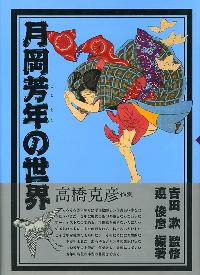
Yoshida Susugu (compiler) This is indisputably the best Yoshitoshi book. It has a very high ratio of show (art) to tell (text). All but the front matter, and the last 25 or so pages, are in color. Most of the pictures are full-page or nearly full-page with print particulars and captions of varying (appropriate) length. Half the black-and-white pages in the back are given to preliminary drawings and woodblock book illustrations and the like (some of the color illustrations also show preliminary and picture book illustrations), and half are devoted to the usual bibliographic information, chronology, and index to prints in the book. While practically all categories of Yoshitoshi's work are represented, the skew is clearly toward his finer prints. When it comes to news nishikie, the line is drawn between the artistically higher quality Kinsei jinbutsu shi series distributed with the Yamato shinbun (one example is shown), and the more roughly designed, carved, and printed Yubin hochi shinbun nishikie (none are included). Of interest to students of the Kyodo risshi no motoi (Foundations of learning and achievement) series of 53 prints, four of which were done by Yoshitoshi, are illustrations of two known variations of the first print in the roughly chronological series. One variation (possibly the first edition) shows the Yamato general Tsuki no Kishi Ikina wearing a red hakama. In the other version it is black. The print depicts the defiant heroism of the bearded and long-haired Ikina, who had been captured by Shiragi (Silla) forces on what is today the Korean peninsula, in 562, the year Yamato loses its governmental outposts in Mimana. When Ikina refuses to submit, the Shiragi commander draws his sword, compels Ikina to remove his hakama, orient his buttocks [shiritabura] toward Yamato, and shout "Generals of Yamato, eat my ass [shiri o kurae]." Instead, Ikina shouts "King of Shiragi, eat my ass!" He is killed when, subjected to torture, he keeps shouting this. Ikina, a Yamato commander, was a descendant of a Kudara man who had migrated to Yamato and changed his allegiance. His son, seeing his father killed, embraced his body and also died. The story ends with two poems expressing the grief of Ikina's wife Oobako, who had also been captured. Both poems, one attributed to Oobako, feature her waving a scarf, reminiscent of several Man'yoshu poems about Matsura Sayohime (松浦佐用姫), who waved a scarf from a hill, thus named "Scarf-waving mountain" (領巾振山), in present-day Saga prefecture, where according to legend she watched her husband sail off to the peninsula, where Yamato was aligned with Kudara (Paekche) against Shiragi (Silla).
It is somehow fitting that Yoshitoshi was asked to design this very first print of the popular didactic and inspirational series, which featured people, mostly men, who were seen as models of moral leadership and self-realization. The series was published by Matsuki Heikichi between 1886 and 1890, when nationalism was rapidly spreading, nurtured by a growing awareness of the feats of bravery and sacrifice of past and contemporary heroes and heroines. Practically all of the nishikie produced during the Meiji period, including most of Yoshitoshi's work, was intended to extol the heroic deeds of men, women, even children, and to otherwise beautify Japanese life and history. Much of it was done, like Yoshitoshi's inimitable caricature of Ikina mooning the King of Shiragi (Silla), with a biting sense of humor. (WW) Contents Introduction by Yoshida Susugu 1. The passion and beauty of blood Preparatory drawings and illustrations |
| Kobayashi Kiyochika |
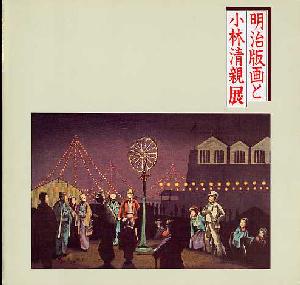
Gunma Kenritsu Kindai Bijutsukan (editor) Among catalogs of exhibitions of prints drawn by Kobayashi Kunichika (1847-1915), this is one of the finest. One only wishes that all of its roughly 157 pictures were in color. Most of the "printed pictures" (hanga) are woodblock prints (mokuhan). Some, though, are lithographs (sekiban) or copperplate prints (doban) prints, including hand-colored and varnished engraved prints. The prints are presented in two sections, corresponding to the two parts of the exhibition. The Meiji section, however, includes a few of Kiyochika's prints. It also includes two news nishikie -- Yoshitoshi's YNS-449a and Yoshiiku's TNS-914, among other prints that reflect the unfolding of life after the Meiji Restoration. Utility of art publicationsThe utility of a publication on art is measured by the fidelity of its presentations and accuracy of its descriptions. This catalog appears to rank high by both measures. presentation and description. Most prints in this catalog appear to be shown as they exist -- with margins, tears, stains and all. Such information can be extremely useful. Kiyochika's "Hikifune"The English titles of Kiyochika's Hikifune print in this catalog, and in Henry D. Smith II's study, are as follows.
Smith remarks that this print "was reproduced by the publisher with wholly new blocks in about 1920" and that the latter edition "can be identified by correction of the smaller font "w" in "VIEw" and by the elimination of the faint shape of a well on the far shore, just left of the woman" (Smith 1988:25). He attributes his description of the circumstances of the reproduction, but not his observation of the differences from the original, to a Japanese source. The margins of the print in Smith 1988 are stained or otherwise marked in ways that are typical of prints of such vintage, whereas the print in Gunma 1986 extremely clean. The exhibiton catalog identifies some works as "later impressions" (atozuri), but no such qualification is made for the "Hikifune" print. Two copies of the "Hikifune" print were exhibited in the two parts of the exhibition. The print shown as a black-and-white image in the Meiji part of the catalog (No. 88) is attributed to Ota Memorial Museum. The print shown in color in the Kiyochiku part (No. 6) is attributed to Keio Gijuku. Both have "NIGHTLY VIEW" -- hence, following Smith, both would appear to be reproductions. Kiyochika's "Shinohashi"The exhibition also featured two copies of Kiyochika's "Shinohashi" print in the same series of landscape drawings -- again, one in each part, each from different contributors. These copies, though, are of different editions. No. 87 in the Meiji exhibit (shown in color in the catalog) has the yellow border and both Japanese and English titles, like the copy shown in Smith 1988 (page 24). Though it looks a bit cleaner than the copy shown in Smith, it is comparable down to irregularities in the impression of the yellow margin and marks on the water that appears to be the anomalies of the printing. In fact, both the Gunma and Smith copies are attributed to Ota Memorial Museum. No. 6 in the Kiyochika exhibit (black-and-white in the catalog) is missing the border and English titles, and the marks on the water. This copy is attributed to Keio Gijuku. See also review of Smith 1988 in this Bibliography, and Nipposha's glory for more commentary on varitiations of prints in this series. The Gunma exhibition catalog also shows an extremely interest triptych, printed in 1872, showing a fully romanized and katakanized version of the kanji title -- all reading right to left, mora by mora. See Tonichi mastheads for an analysis of the linguistic significance of this multiple-script title. (WW) |
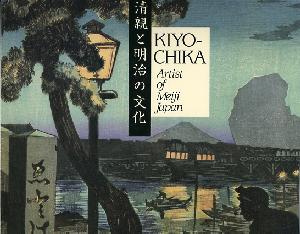
Smith, Henry D., II Kobayashi Kiyochika (1847-1915) is widely regarded as the last major woodblock printed picture drawer of the Meiji period -- as opposed to drawers who straddled the bakumatsu and Meiji periods (Yoshiiku, Yoshitoshi, even Mizuno Toshikata), or the Meiji, Taisho, and even Showa periods (Kaburaki Kiyokata). Kiyochika designed all kinds of prints, from landscapes to historical figures and beauties. He was also a humorist and caricaturist, and his two Hyakusen hyakusho series -- one during the Sino-Japanese War (1894-1895), another during the Russo-Japanese War (1904-1905) -- qualify him as one of Japan's finest political cartoonists. Smith's book exceeds in expectation the vast majority of exhibition catalogs. The quality of the illustrations, practically all in color, and of Smith's commentary, is extremely high. Not all of the information is reliable, though. Prints captioned in EnglishSmith introduces Kiyochika's single-sheet horizontal landscape prints in the following two-page article, which flows around color images of two of the earliest such prints (pp 24-25).
Smith's overview takes time to chew and longer to digest. My first impression of his timeline was that he and the sources he cites had the sequence backward -- that printings with English titles came later. Timeline standsMy initial skepticism stemmed partly from the arrogance of ignorance I am apt to project on anything I study for the first time -- and partly from my observation of how the drawing of most interest to me, of Nipposha on Ginza, was being marketed. I examined a print of the Nipposha picture which a Kanda shop was selling as an early if not original edition. It had no Japanese or English titles and no yellow border. But it had the same notification date and other publishing particulars as the edition with titles and border. As for the edition with titles and borders, I had seen only a digital image of this edition, and a recent reproduction. Even allowing for the poor quality of the image, of a print owned by a museum in Japan, the impression seemed poor. The impression of the reproduction -- reputed to have been made from new blocks during the 1950s -- was, of course, too good. And so I decided that -- just as Kanda shops were selling somewhat musty, creased, untitled antique prints for a small fortune, while present-day woodblock publishers were cranking out cheap but neat repros mostly for tourists and overseas sellers -- Meiji publishers, too, had reissued a foreign souvenir edition with English titles. The odd romanization didn't bother me, for there are plenty of examples, even today, of peculiar romanization created by people not familiar with spelling conventions, such as they are. Even the "Tokei" for Tokyo would have been possible for some individuals well into the late 19th if not early 20th century. However, after looking at various editions of the few drawings that have versions with English titles, I have decided -- with apologies to Smith -- that the timeline he reports, based on the sources he cites, is plausible. His account, though, leaves room for alternative explanations. Kyodo risshi no motoiKiyochika also contributed a portrait of Tonichi's editor, Fukuchi Gen'ichiro, to the Kyodo risshi no motoi (KRM) [Foundations of learning and achievement] series of historical figures (p 75). Smith calls this series "Kyodo risshiki" -- a common but unattested reading of the title). Smith states that the KRM series ran to 52 prints. However, a more recent study by Iwagiri Shin'ichiro -- "'Kyodo risshi no motoi' ni tsuite", in Yamaguchi Keizo, ed, Ukiyoe no genzai, Tokyo: Bensei Shuppan, 1999, pages 441-455 -- lists 53 prints. I have confirmed all of the prints in Yamaguchi's table of known prints, and several variations which he does not list (Yosha Bunko). Smith notes that a certain museum misattributed a Mizuno Toshikata print in this series to Kiyochika (p 75, n 1). Iwagiri made the same misattribution (p 453). See Nipposha's Glory for scans and variations of Kiyochika's drawings of Nipposha and Fukuchi. (WW) |
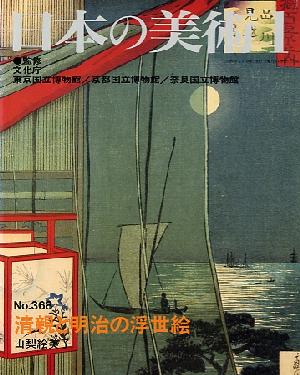
Yamanashi Emiko (editor) Includes an article by Shimizu Isao on Kobayashi in the history of Meiji satirical pictures (86-91, a Kiyochika chronology (92-86, and a Kiyochika bibliography (97-98). The compilation of this issue was overseen by the Cultural Agency (Ministry of Education), and (under this agency) Tokyo National Museum, Kyoto National Museum, and Nara National Museum. To be continued. (WW) |
| Ito Seiu |
Geijutsu Shincho In Japan's modern-day subculture of Sado-Masochism, one man stands out for having created the art form on which much of the SM genre has come to be based. The son of a sculptor, Ito Hajime (1882-1961) was born in Tokyo's Asakusa working class district. At age 10, he watched a stage drama featuring a samurai heroine, and from that day forward became infatuated with women in distress. Ito adopted the name Seiu (written with the characters for "clear" and "rain") at age 13 and worked at a number of odd jobs, including printer's apprentice and later a newspaper reporter. But his interest in females in distress never waned. Around spring of 1919, Ito hired Sahara Kise, a young art school model. They were soon living together, and after she became pregnant Kise became Ito's second wife. Kise posed willingly for her husband, and he began to use his young wife as a model for experiments in "restraint" as depicted in old prints, photographing her nude or semiclad body in sessions that lasted as long as three hours. To help Ito reproduce Yoshitoshi's famous torture scene in Oshu Adachigahara hitotsuya no zu (The house at Adachigahara in Oshu), Kise allowed herself to be suspended upside down from the rafters while pregnant. Ito produced other drawings based on historical records of judicial torture, or "shikei" (private punishment), and from famous myths and legends of females in distress. Ito's efforts to revive, modernize and popularize "shibari" (bondage) art earned him national recognition, and with it, newfound respectability. The June 1924 issue of Sunday Mainichi, a nationally circulated mainstream magazine, featured him tying up and photographing his wife in a variety of poses. This was digested in the HaiHai column of The Japan Times and Mail, and a rope maker wrote to The Times complaining that it should not be a vehicle for the abuse of hemp in the name of art. As the censors cracked down on art in the 1930s, Ito's fortunes declined. He was left destitute paying medical bills for his third wife, who was committed to a mental institution. Already 63 when the war ended, he nonetheless set out with renewed vigor, taking advantage of postwar liberalization to turn out a stream of prints, postcards, makimono (scrolls), pocket-size books, photo collections and illustrated books. His works ran the gamut from the simply sexual to the truly bizarre. Among Ito's two dozen titles was his most impressive "serious" work, the three-volume Nihon keibatsu fuzoku toshi (An illustrated popular history of crime and punishment in Japan), written in collaboration with Fujisawa Morihiko and published between 1946 and 1952. Like many of Ito's works that were reissued by admirers after his death, it was republished in a single hardbound volume. Ito's pioneering efforts were joined by other writers and artists who began taking up related themes. Recognizing Ito's enormous contribution to the genre, this issue of Geijutsu Shincho contains nearly 60 pages of samples of his work, photographs, self-portraits, and reminiscences by his daughter Kiku and one of his former models, Mochizuki Aeka. (MS) |
| Kishida Ryusei |
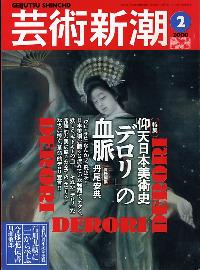
Geijutsu Shincho This issue of Shinchosha's popular Geijutsu Shincho features Tsukioka Yoshitoshi, Kawanabe Kyosai, and Kishida Ryusei -- all known for their bloody, violent, and otherwise grotesque styles that have been called "derori" as used in the expression "derotto shita" -- meaning something uncomfortably "thick and sticky" -- best defined by its antonym "syakitto shita" (refreshing). The "derori" genre as such, more simply garish and bizarre than bloody or even grotesque, was originated by Kishida Ryusei (1891-1929), who was active during the Taisho era when all manner of weird art came into its modernesque own. But the tradition within which Kishida worked was inspired by the works of Yoshitoshi and Kyosai, and even by the "ero journalism" of news nishikie like Shigehiro's Shashimi murder-suicide print, which this magazine shows in full-color. Indeed, the roots of "derori" include the "shibaie" (drama drawings) of the Kano-school Tosa (Kochi) drawer Ekin (Eshi: Hirose Kinzo, 1812-1876), who liked to splash his kabuki scenes with lots of blood -- just as he saw them performed, for fake blood was commonly used on the stages of his day. Some elements of "derori" style go all the way back to 12th- and 13th-century caricatures of death and decay. (WW) |

